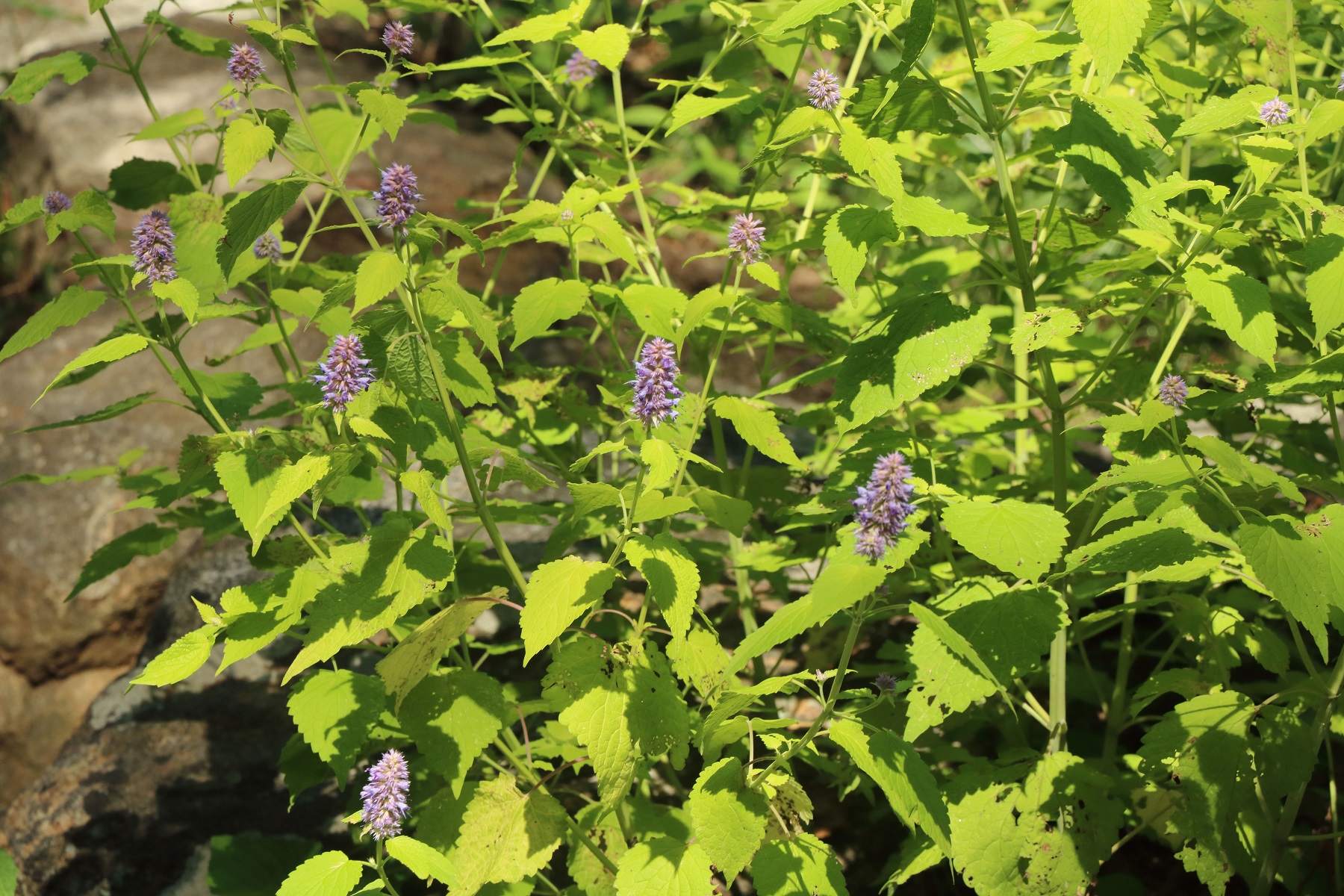GARDENING IN HARMONY WITH NATURE IN THE NORTHEAST
Native Plants for Sunny Edge
A woodland garden can offer additional micro-habitats when natural or man-made openings in the forest canopy exist. This is often the case near roads, streams, houses, or woodland clearings. In these locations direct sun exposure can be in excess of 4 hours a day, and sun or part-sun loving plants may be introduced. Imagine the surprise seeing the native Eastern Prickly Pear in bloom in the woodland garden.
Once a suitable partly sunny area has been identified, check for its drainage. In moist bottom-land areas a different set of plants will thrive than in dry upland sites. Note that the plants for moist sites tend to be taller than the ones in dry sites.
Here are our favorites plants for the Sunny Edge:
PART 1: Moist (but not Boggy) Sites
Joe Pye Weed
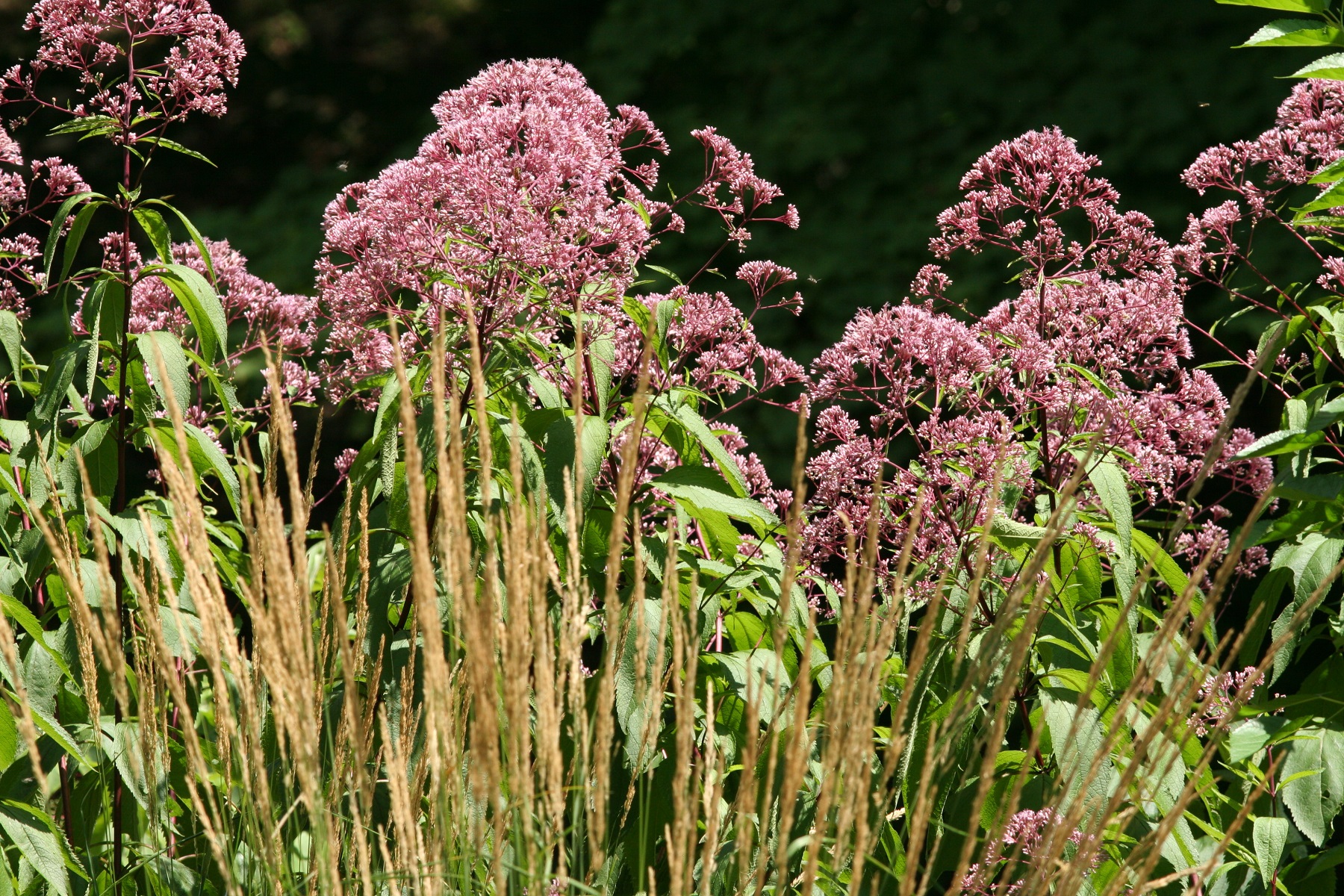
Watch out for Purple Milkweed at native plant sales and if you see it, buy it! This rare native is no doubt the showiest of the milkweeds. Beautiful dark purple flowers bloom for a long time and quite a bit earlier than the other milkweed species such as swamp milkweed, common milkweed, or butterfly weed. The plant resembles common milkweed, but is not quite as tall and looks much more refined. It is a bit floppy and may benefit from support of neighboring upright vegetation. This species is suitable even for formal gardens. Establishment can be difficult. The plant spreads very slowly where happy.
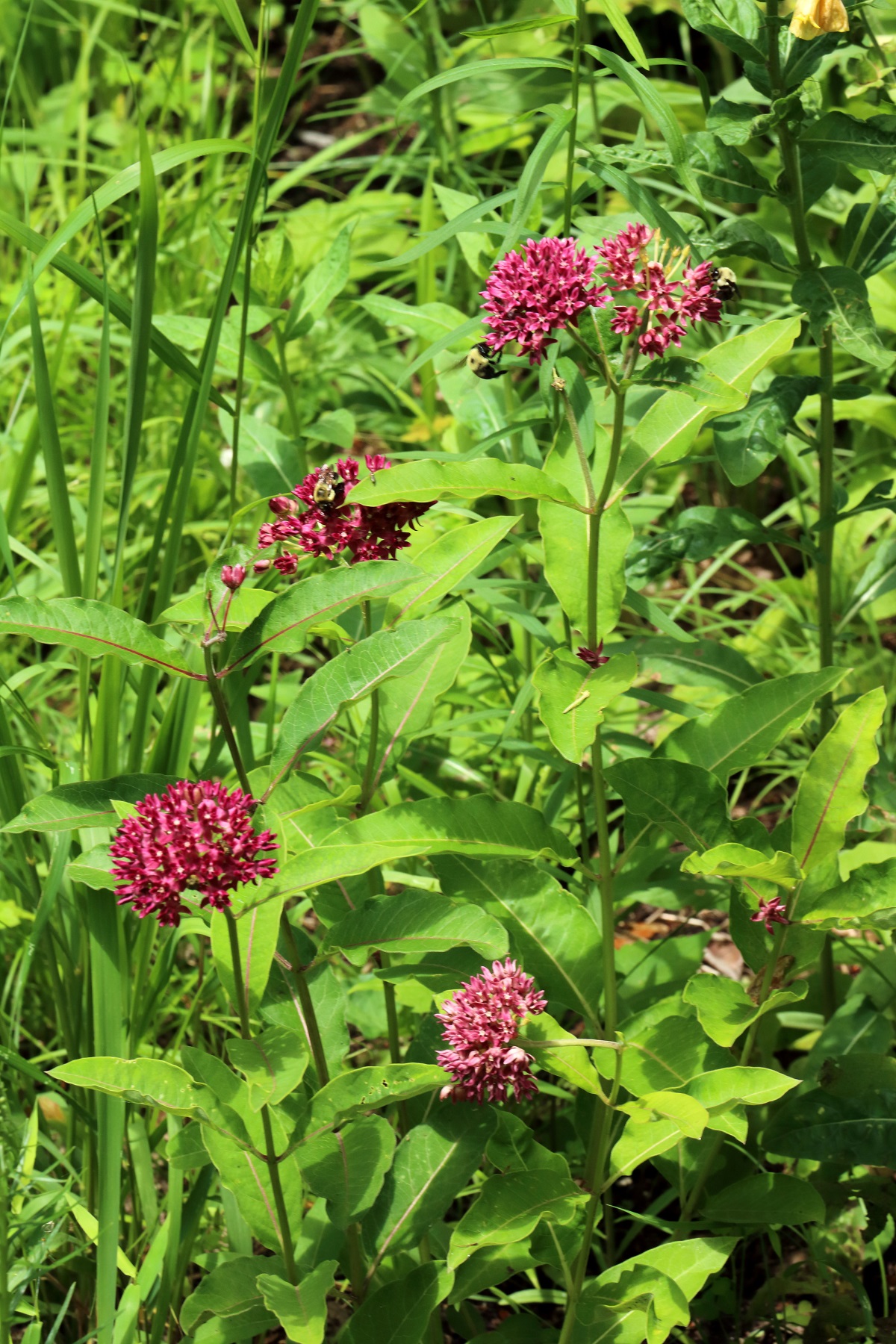
If you love beneficial insects in general and the Monarch Butterfly in particular, get Common Milkweed and give it space to spread. The underground runners can travel 3-4 feet in a year. they will cross paths into neighboring beds. We just pull the ones that pop up where we don’t want them. The amount of insects small and large that this plant supports is simply astounding. And of course, if your woodland has insects, the birds will be there too!
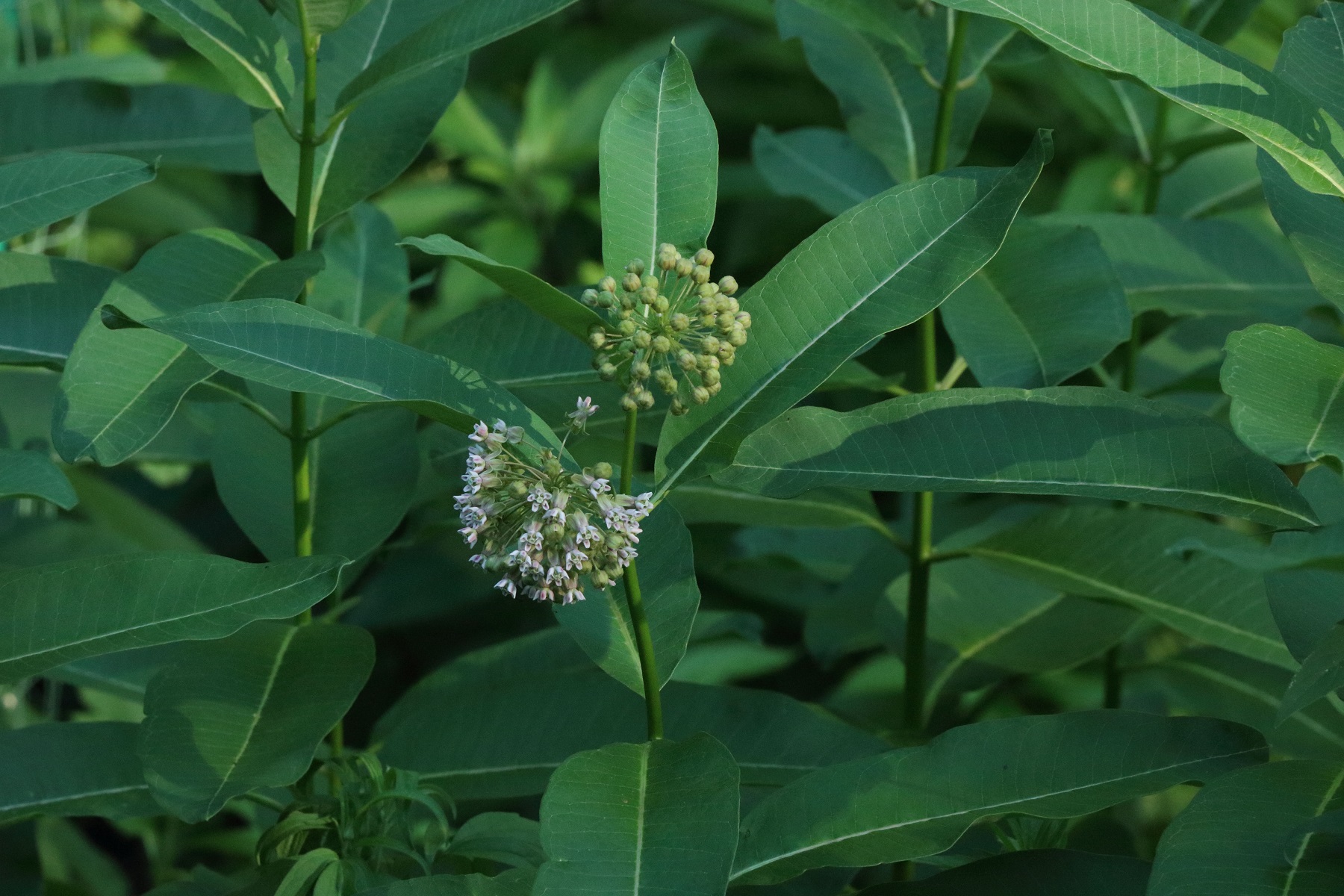
Gray-headed Coneflower, Yellow Coneflower
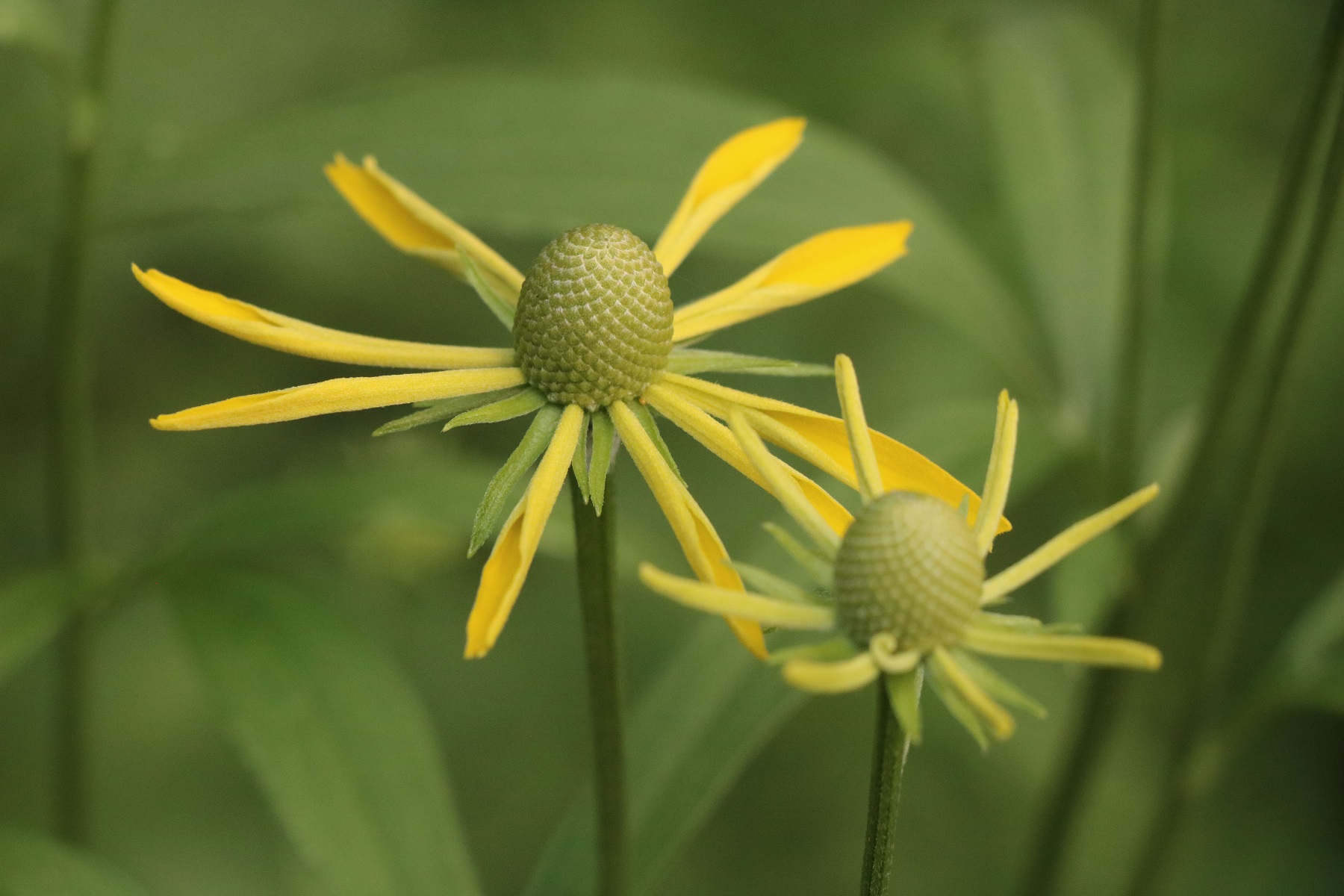
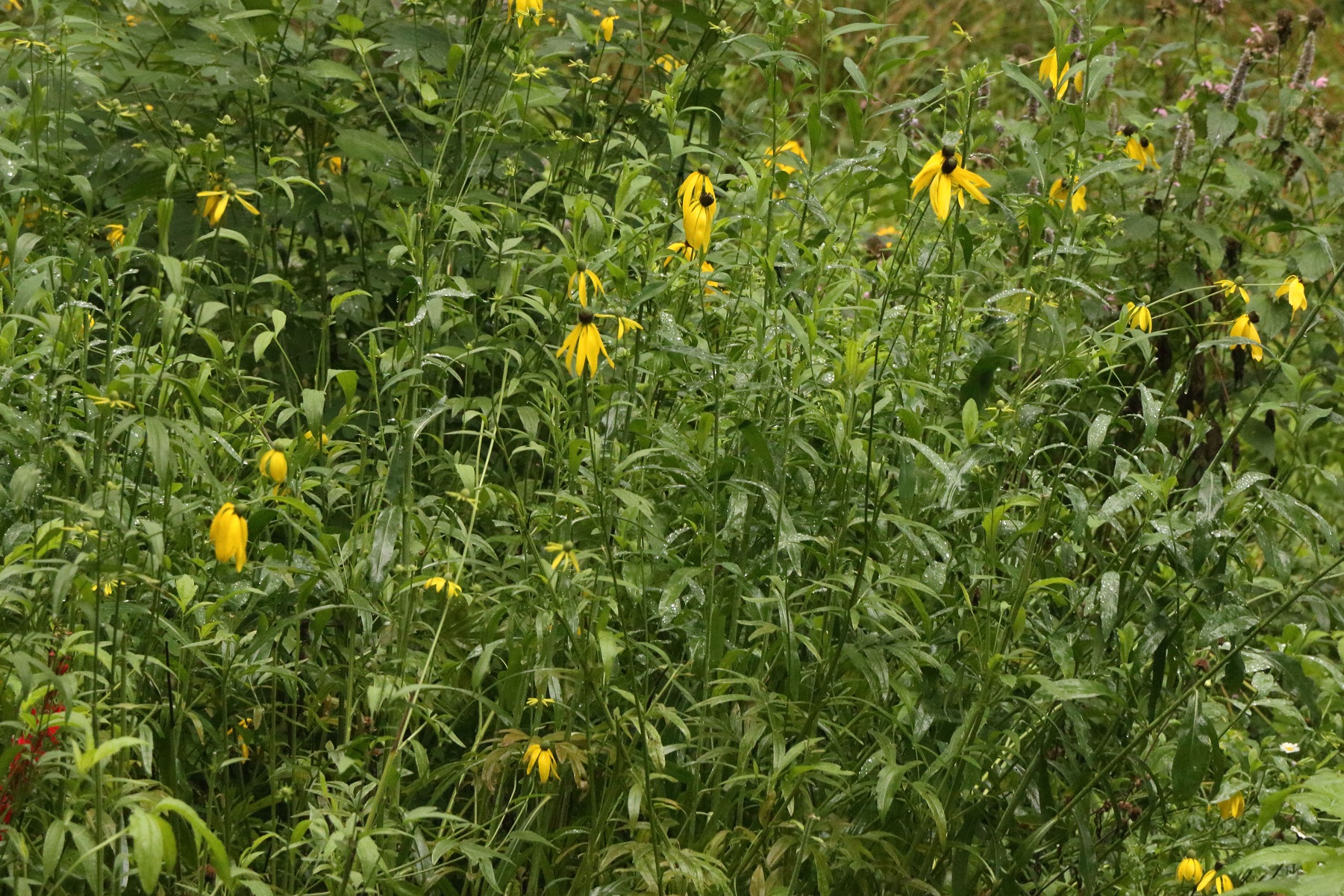
Aptly-named Cabbage-Leaf Coneflower impresses through its fantastic foliage. The basal leaves dominating in spring are huge and numerous and the blue-tinted color is simply gorgeous. In summer floppy slender stems shoot up 6 feet and yellow coneflowers with huge center cones appear. Each flower produces vast amounts of seed for the Goldfinches in fall/winter. Note that this plant may require staking or a fence that it can lean on (at least in our part-shade environment).
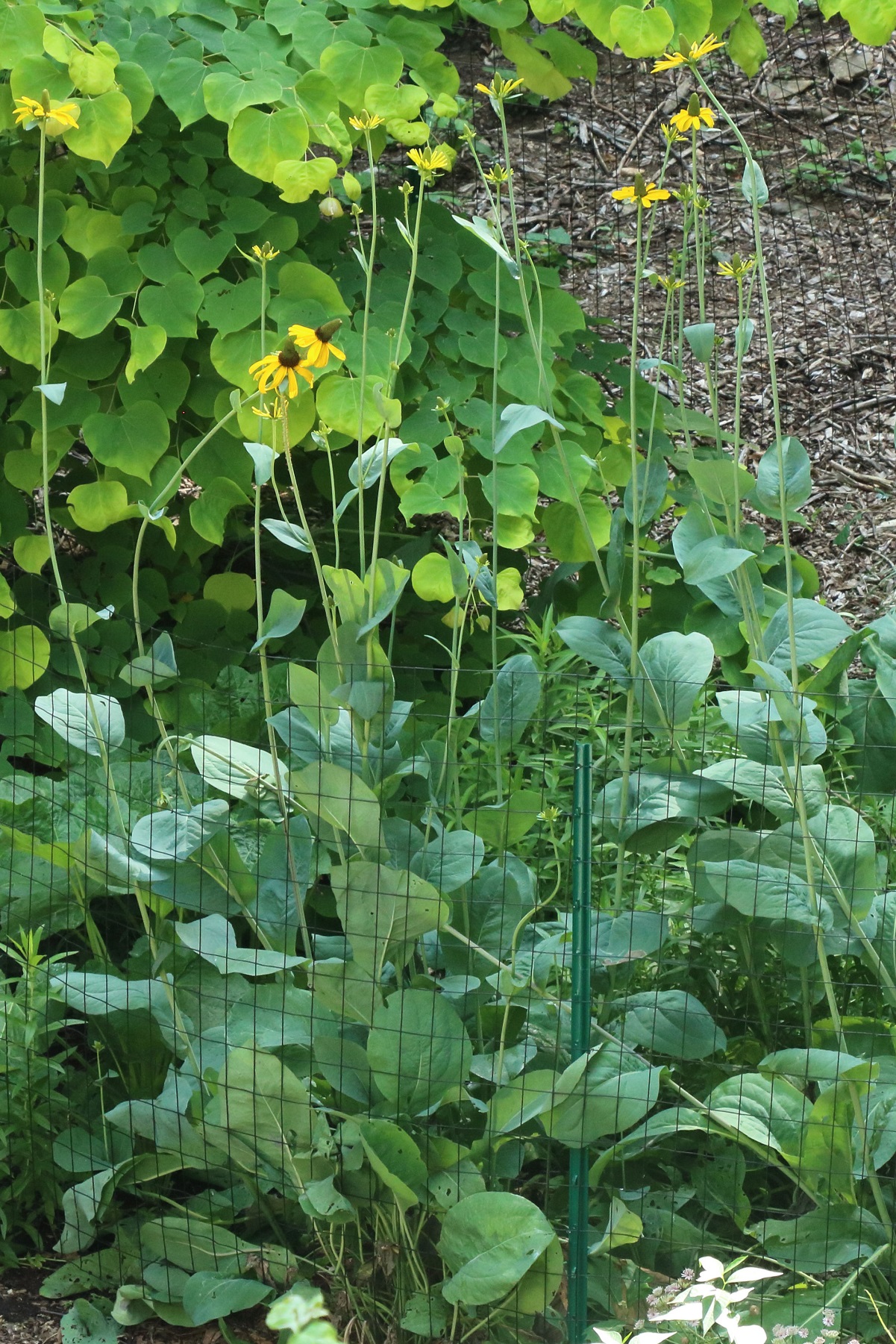
Wild Senna
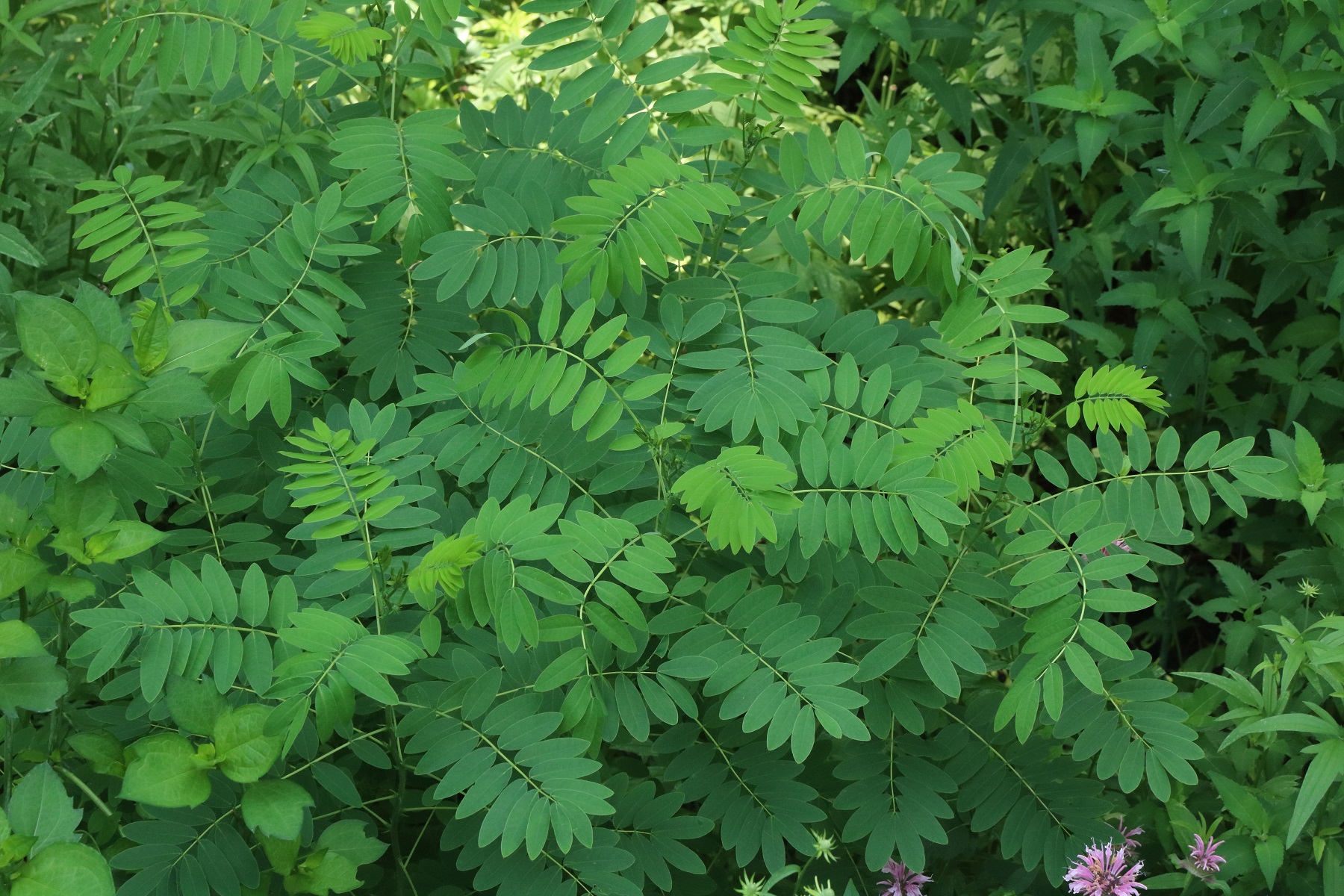

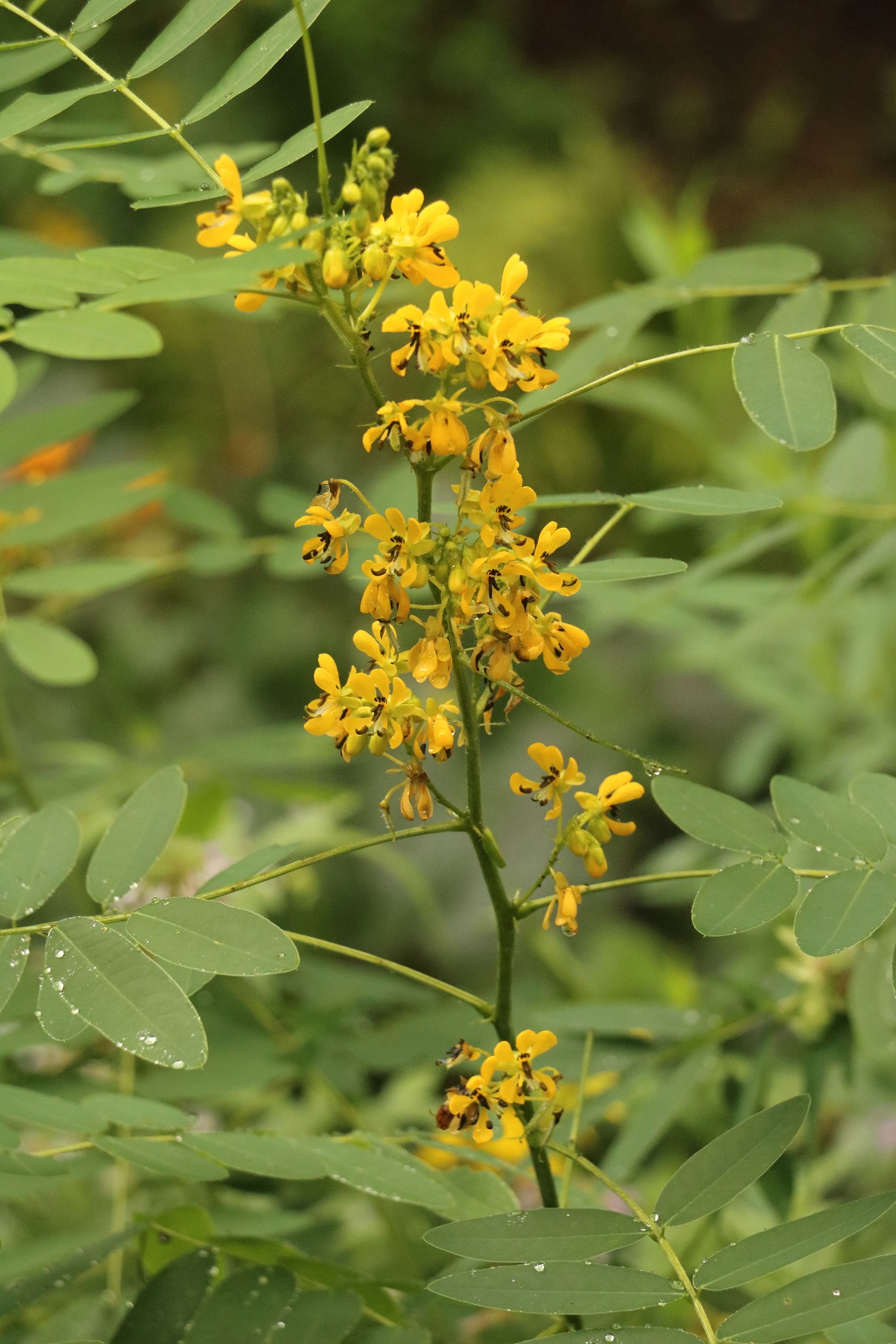
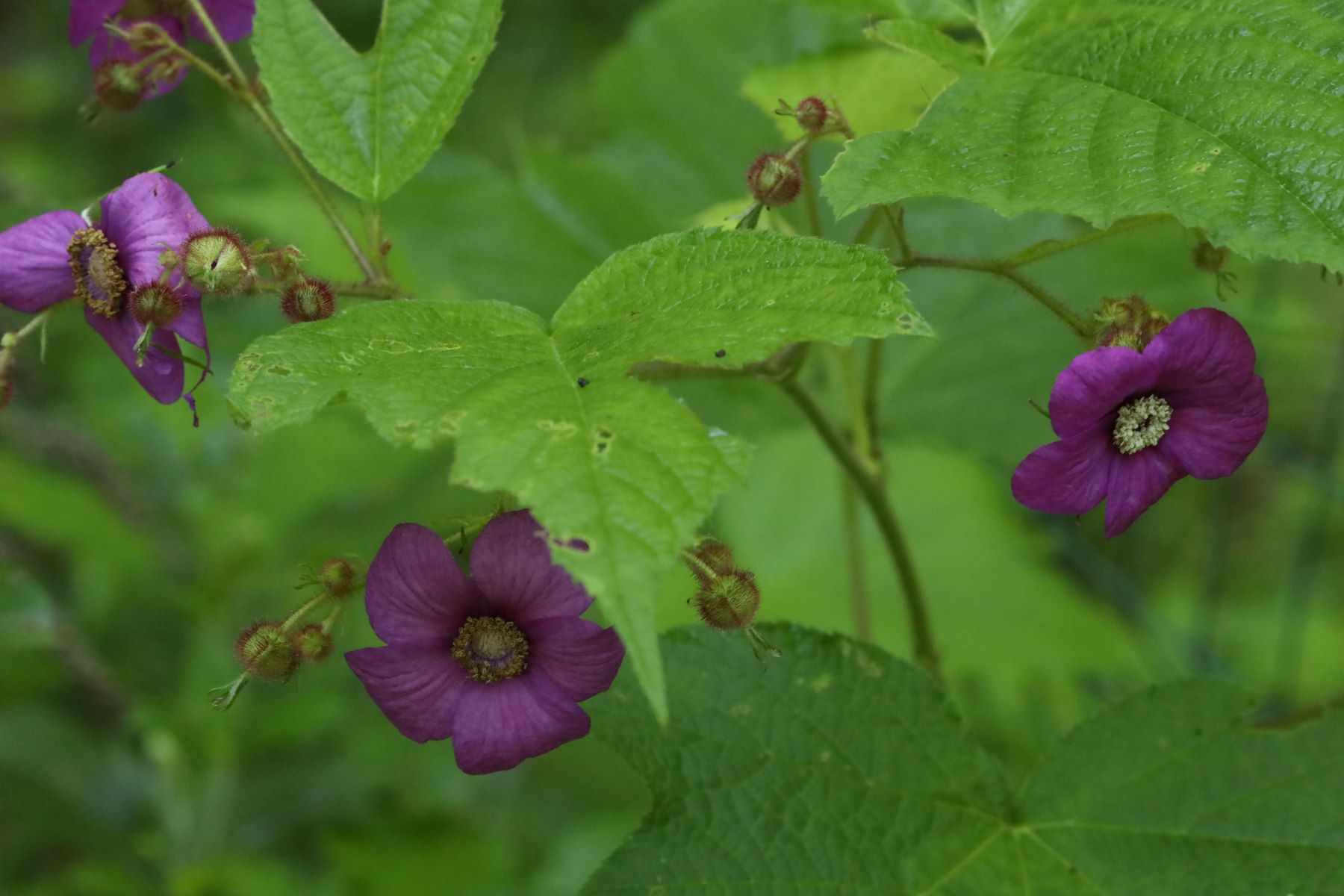
Purple Coneflower
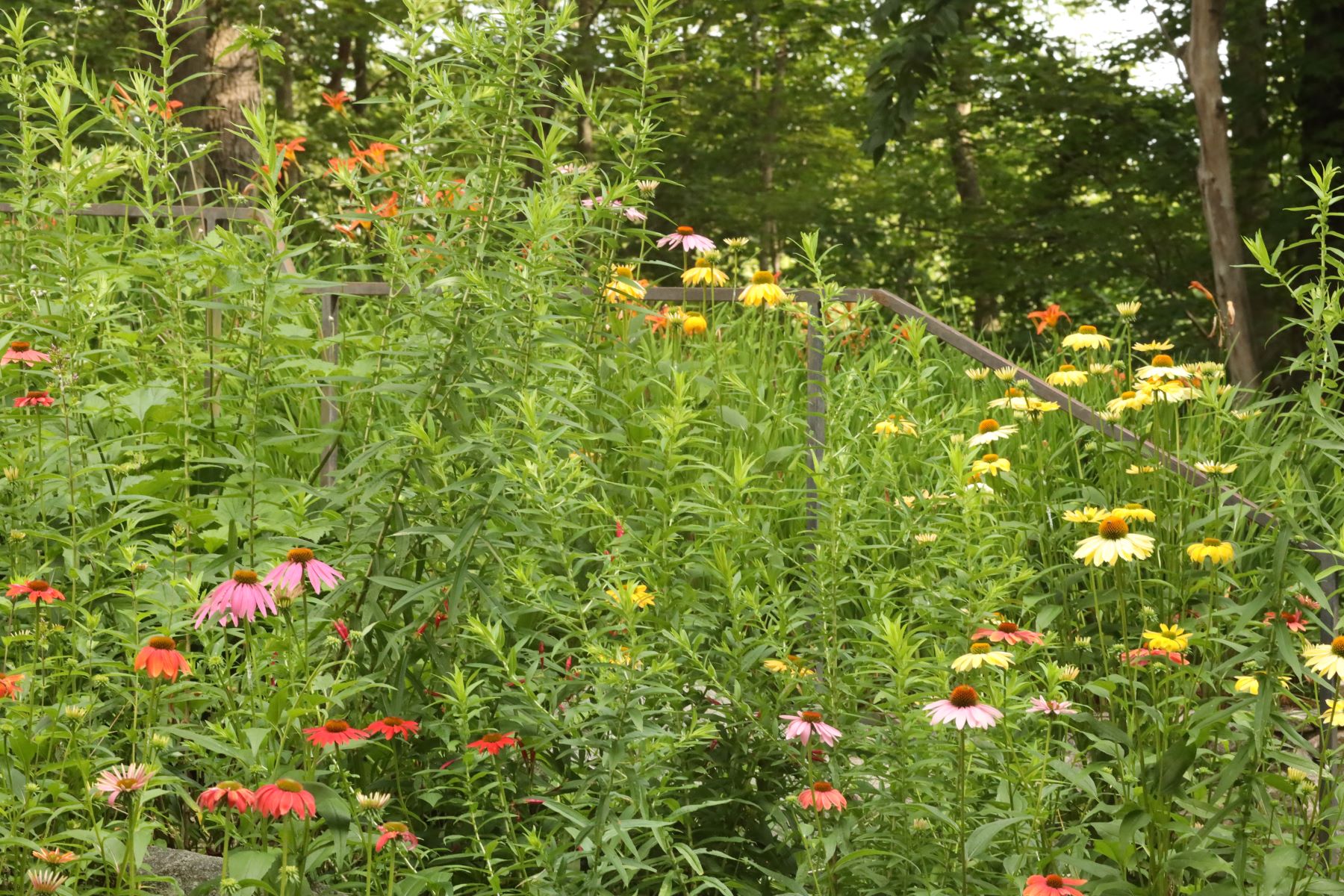
Anise hyssop
The native Anise Hyssop is a tall plant with good foliage and nice flower clusters. We like the look a lot, but somehow our plants had a hard time competing with the other plants in a combination planting setting. Our clumps got smaller over the years and we wish it was more vigorous. Maybe the location or soil we planted it in was sub optimal.
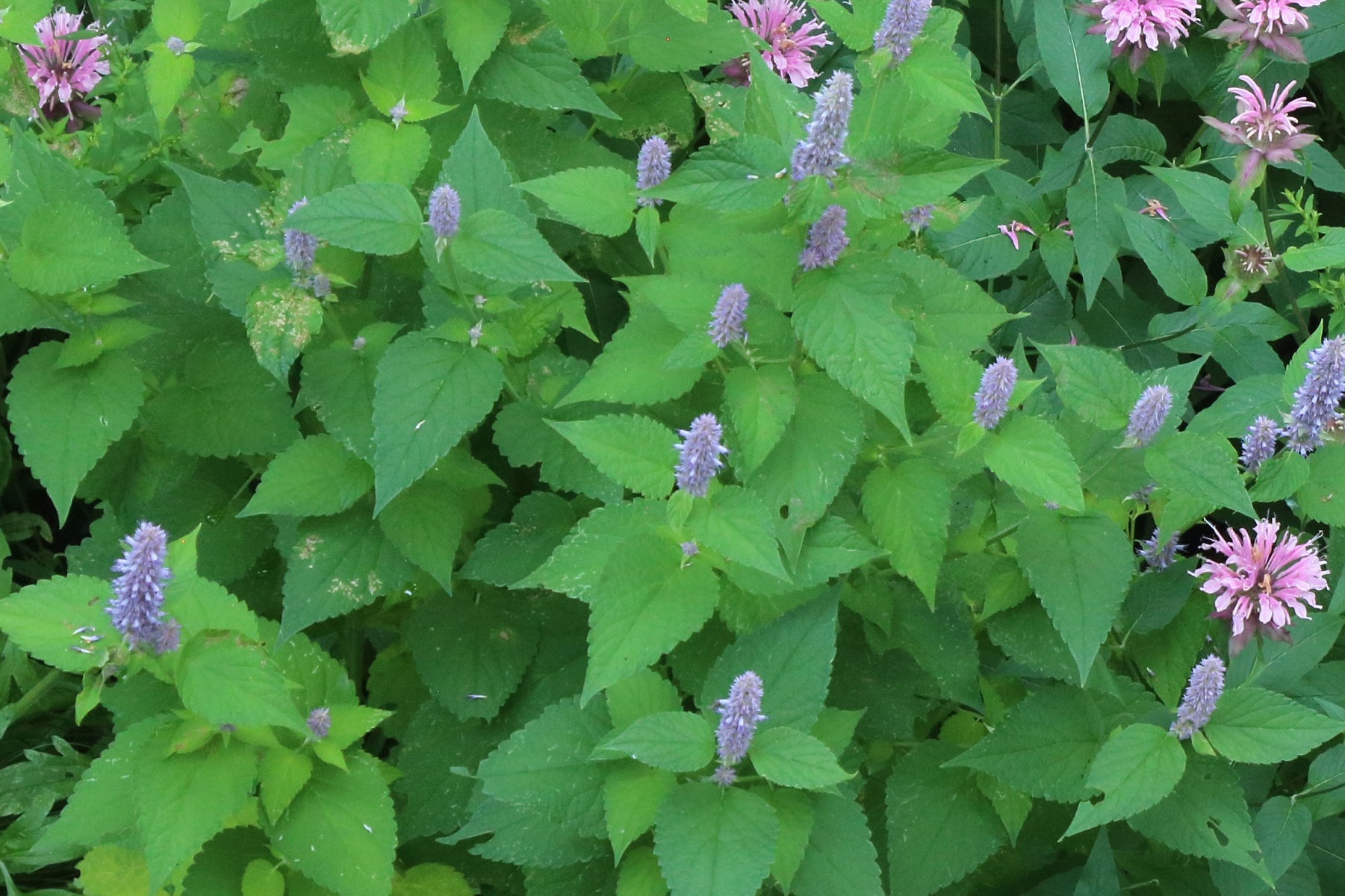
Carolina Lupine
Carolina Lupine, reminiscent of Yellow False Indigo or Lupine when in flower, is a very tall plant with big flower clusters held high above the foliage. It blooms for a long time in summer and once it’s done blooming it has fall interest with its showy leaves and huge seed capsules. Carolina Lupine grows easily in our woodland garden setting and we even get the occasional seedlings that we eagerly transplant to favorable locations with enough space.
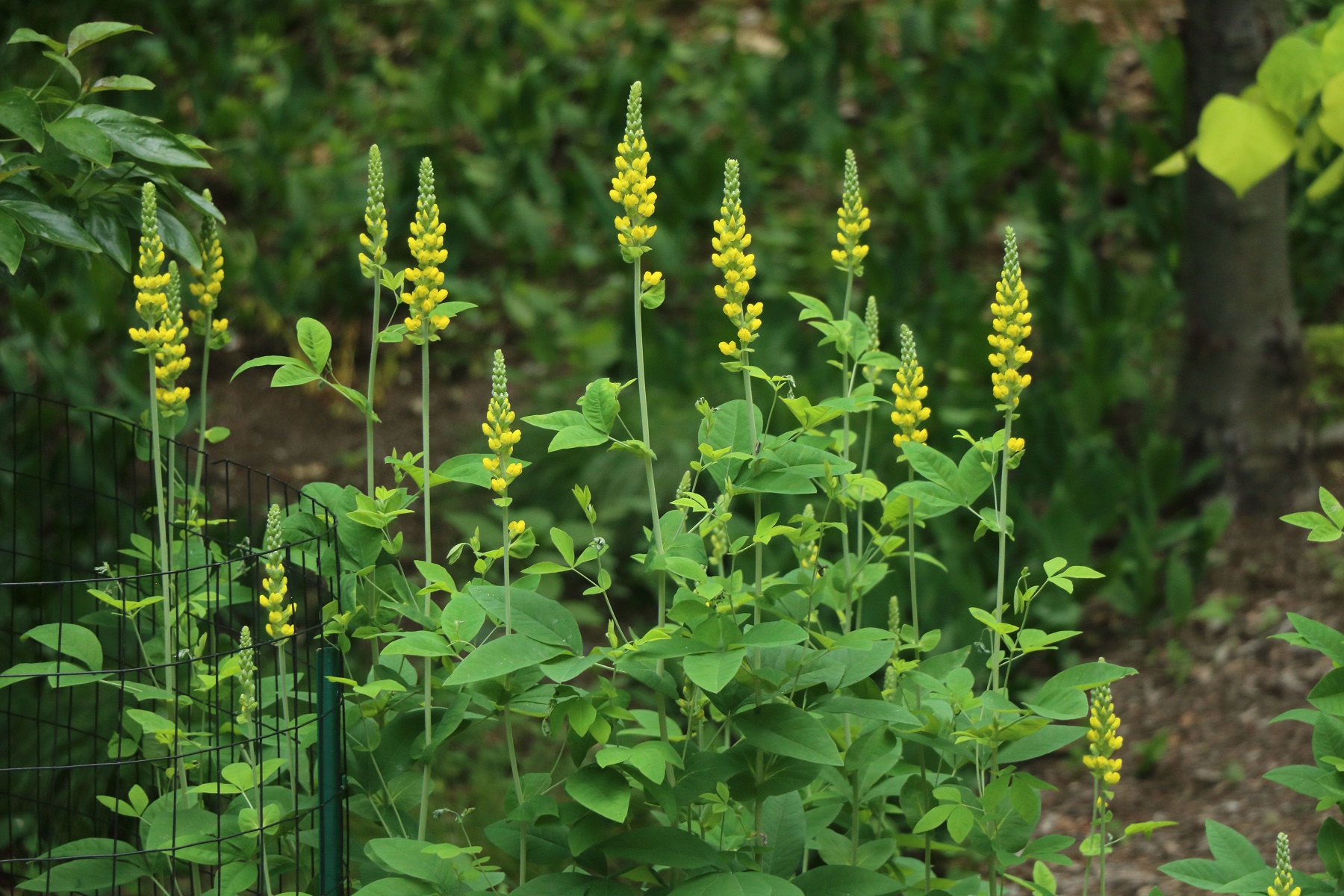
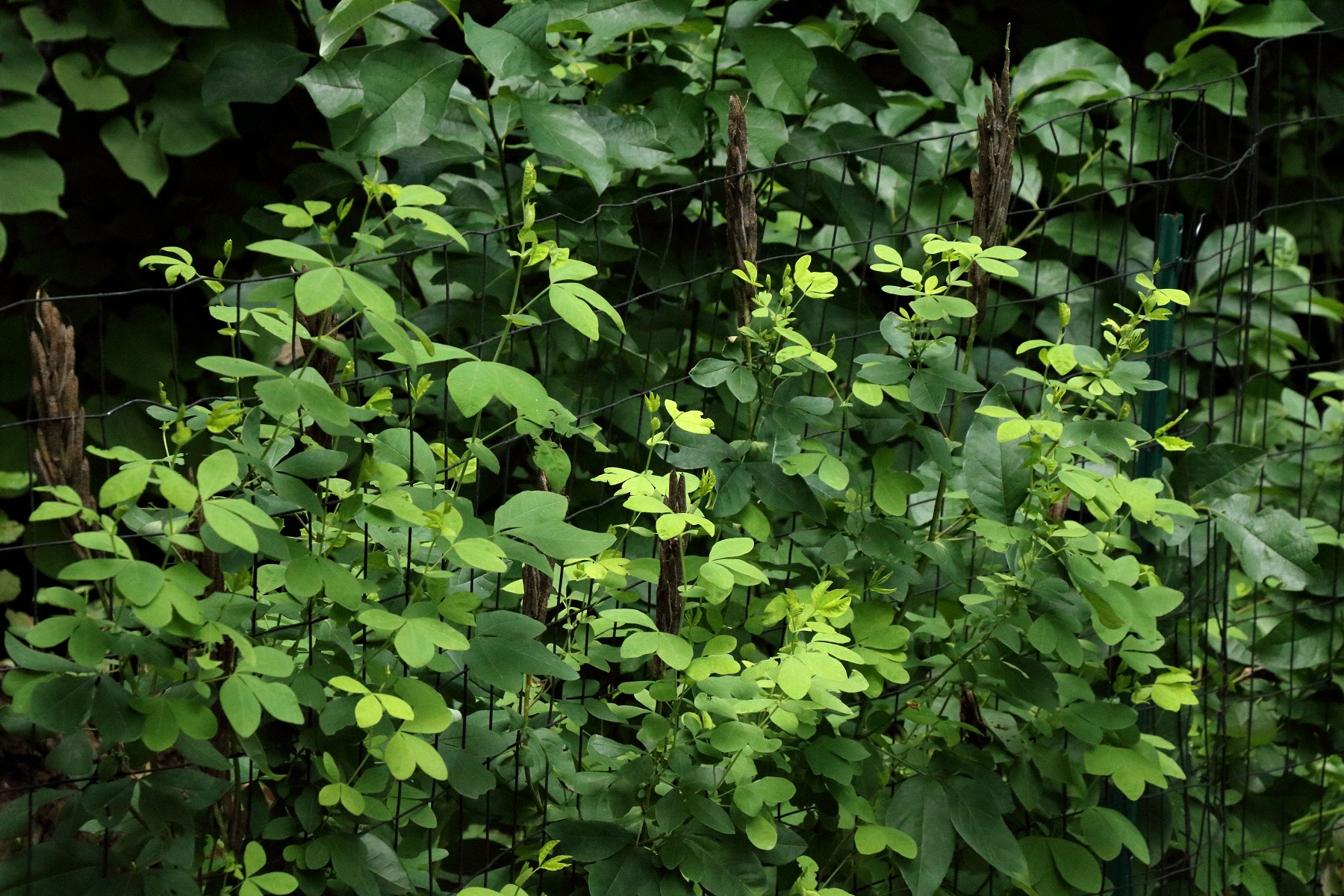
Iris × robusta ‘Gerald Darby’
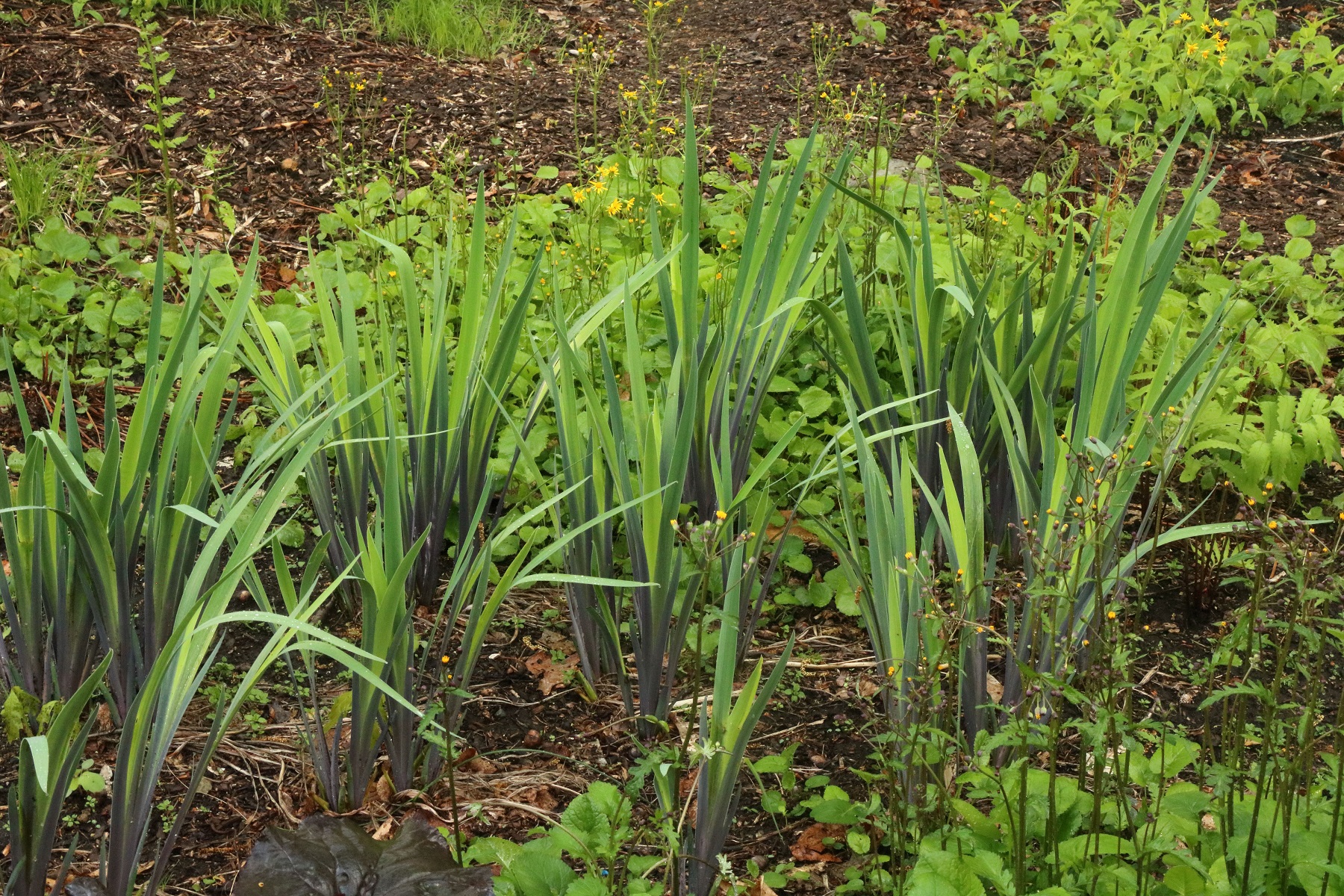
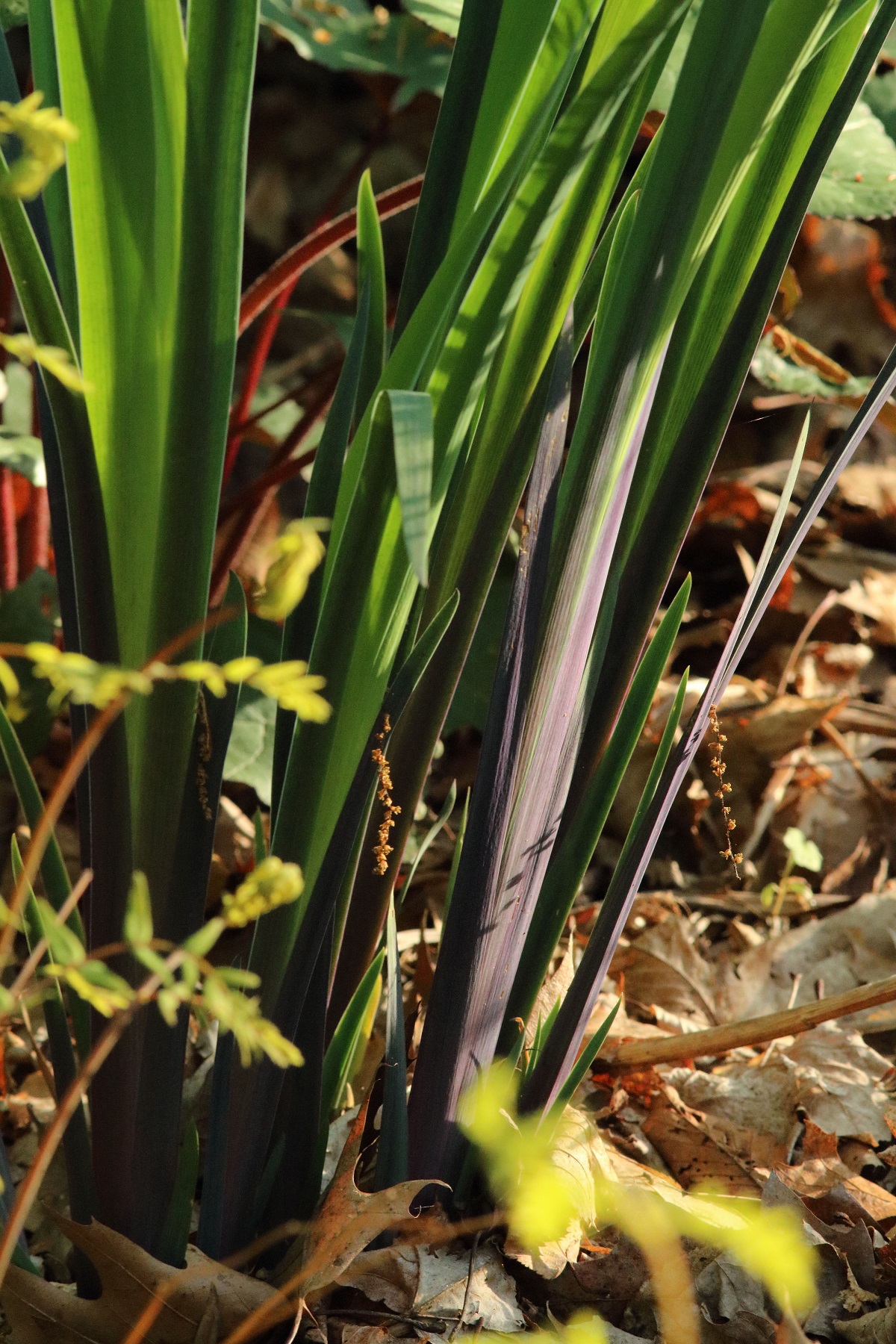
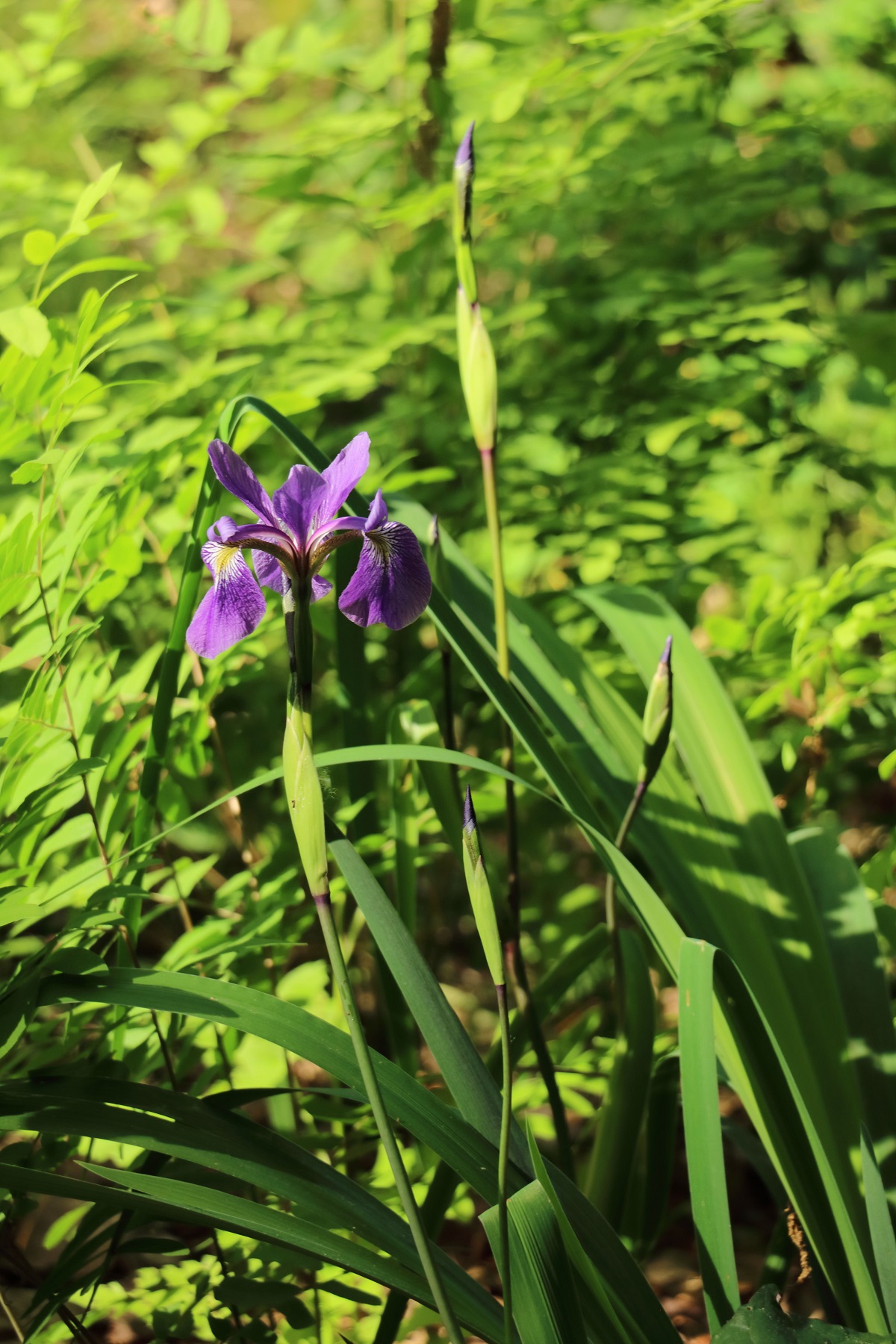
PART 2: Dry Sites
New England Aster
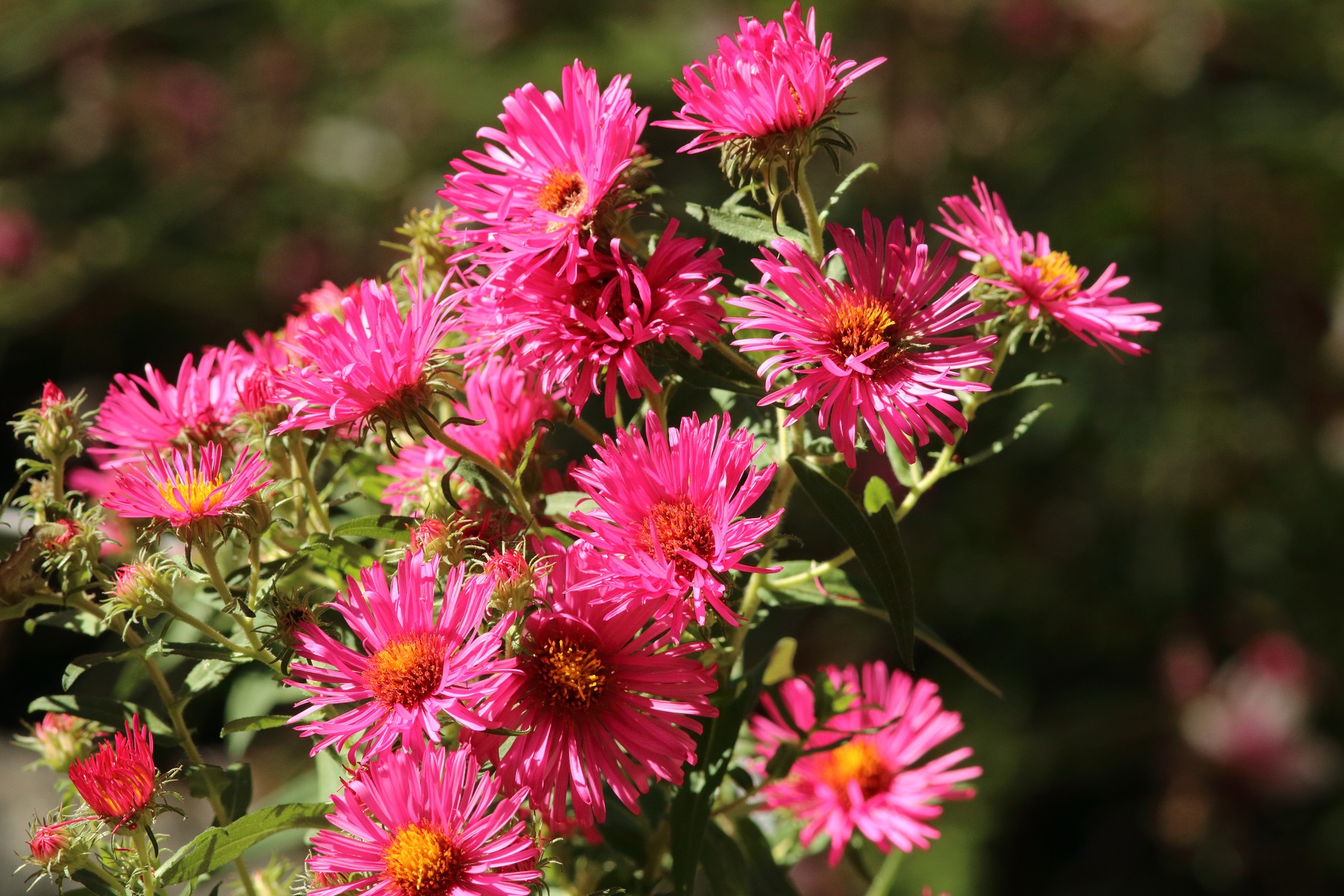
Indian Pink
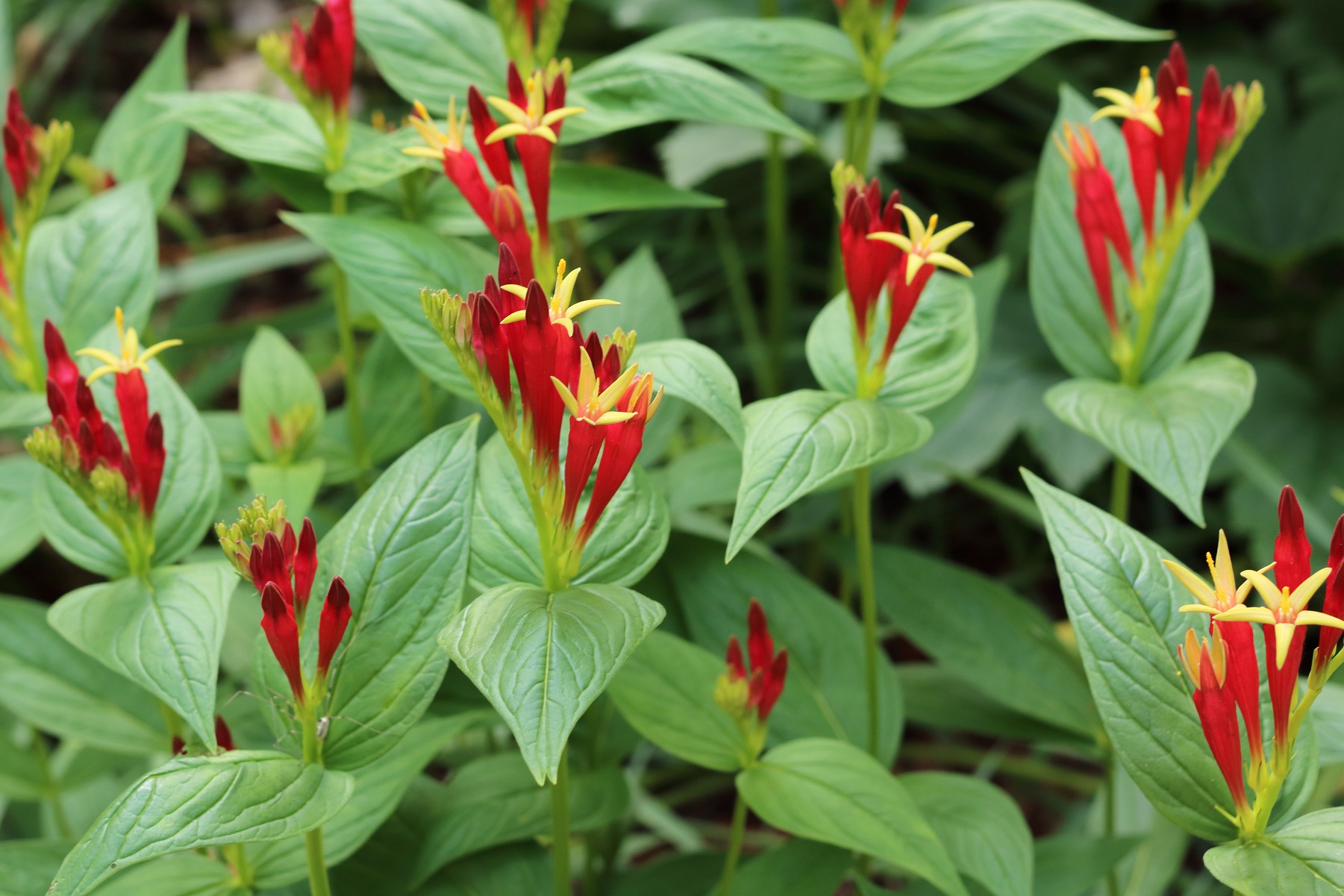
Fringed Bleeding Heart
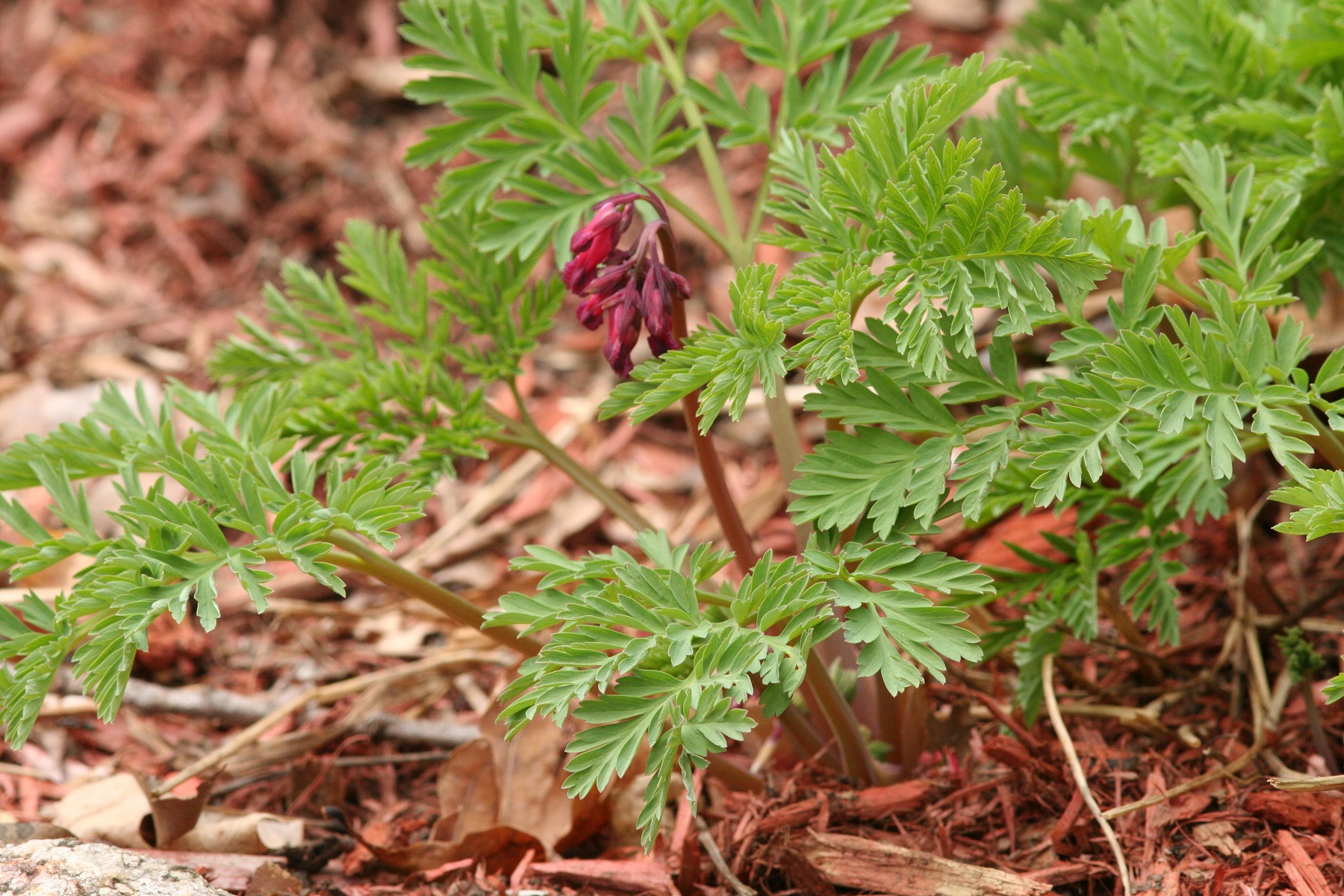
(Fringed Bleeding Heart)
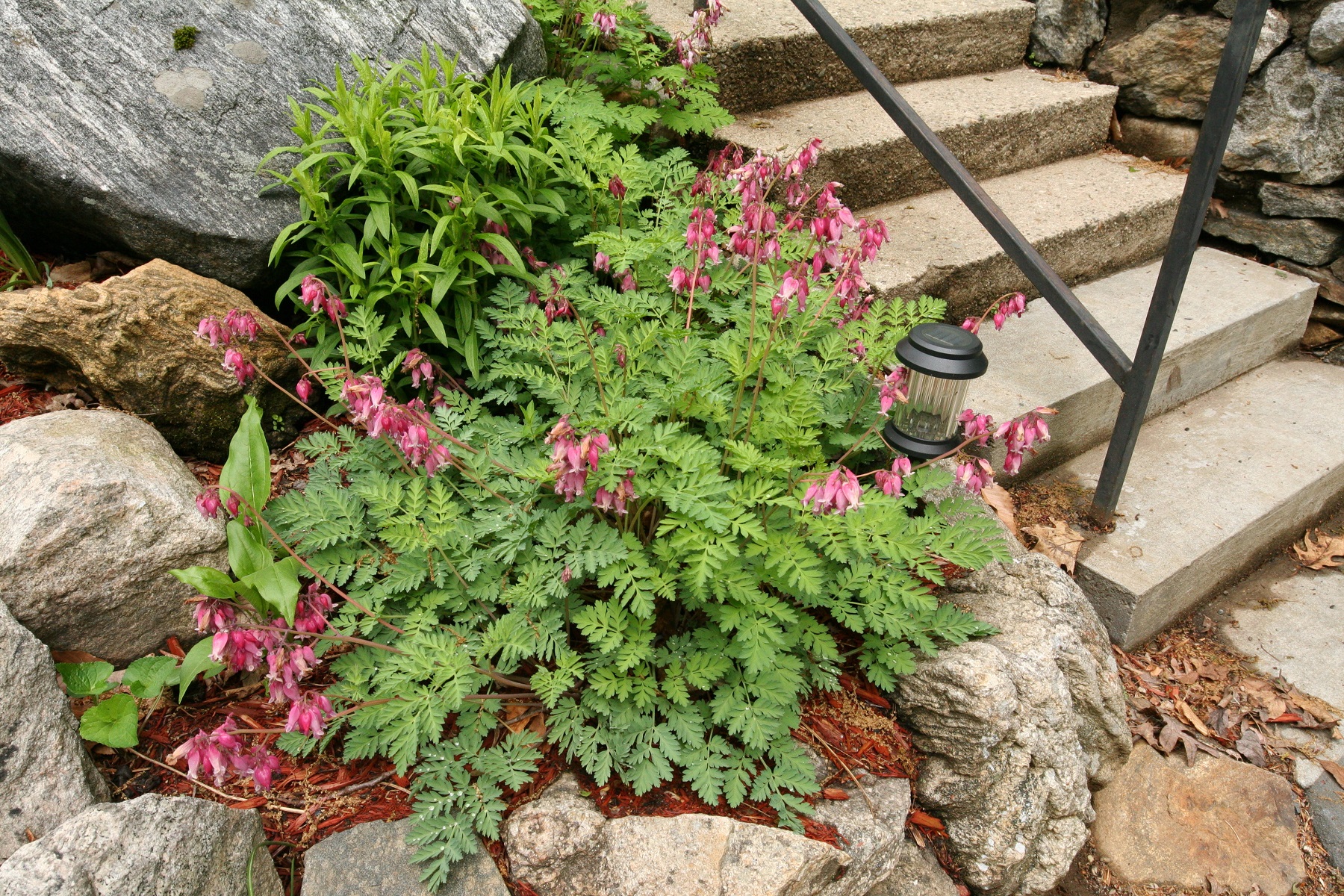
(Fringed Bleeding Heart)
Threadleaf Blue Star
Threadleaf Blue Star has amazing needle-like foliage during the entire growing season. For a short time in early summer, blueish-white flower clusters appear on top. Interestingly, the stems continue growing after flowering and soon the growing foliage is the attractive part of the plant again. If that is not enough, in fall the entire plant turns bright yellow/orange. We grow this Blue Star (Amsonia hubrichtii) and its relatives (Amsonia illustris and Amsonia tabernaemontana) mainly for the fantastic fall color. Give them space since they like sun and grow 3 feet tall by fall.
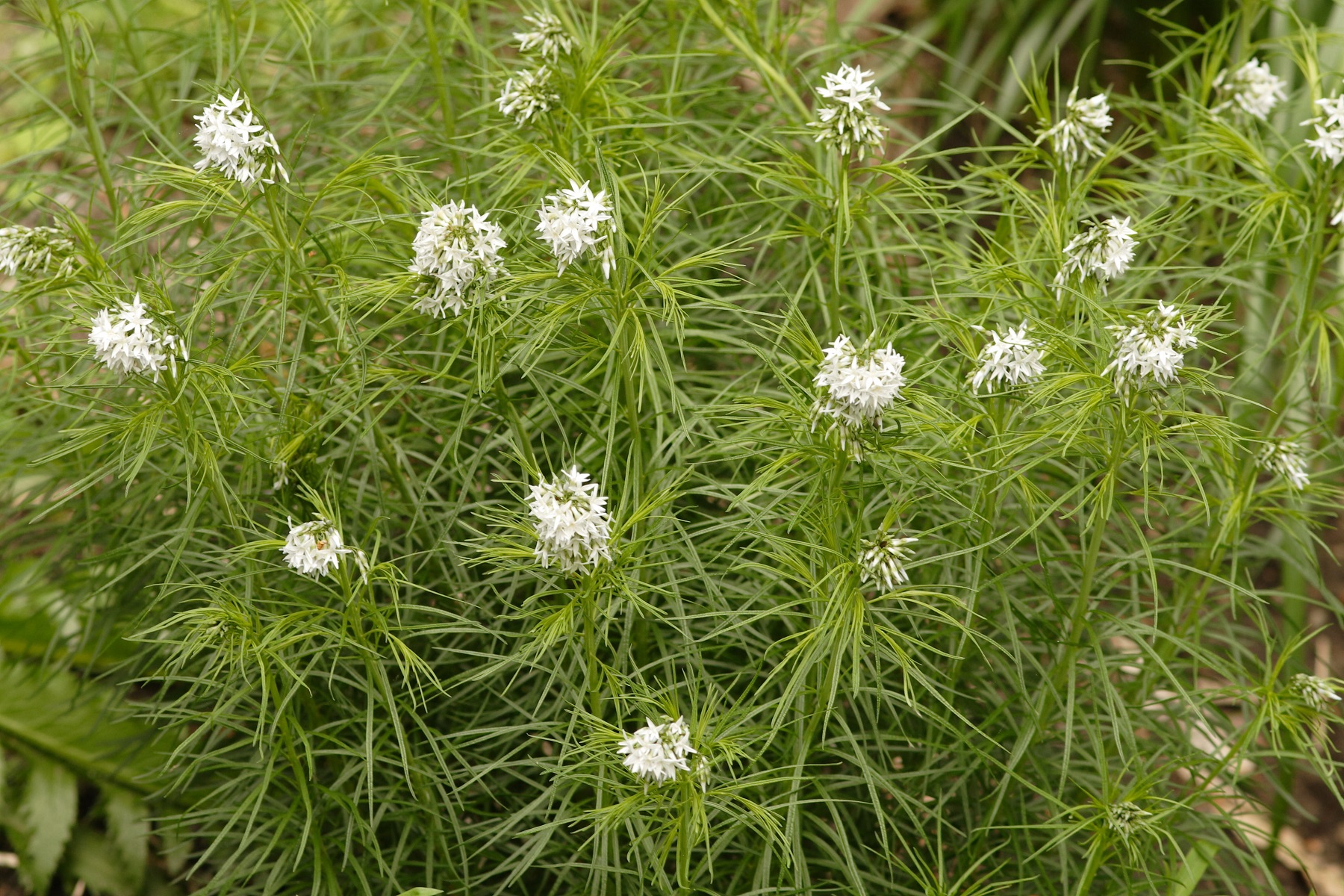
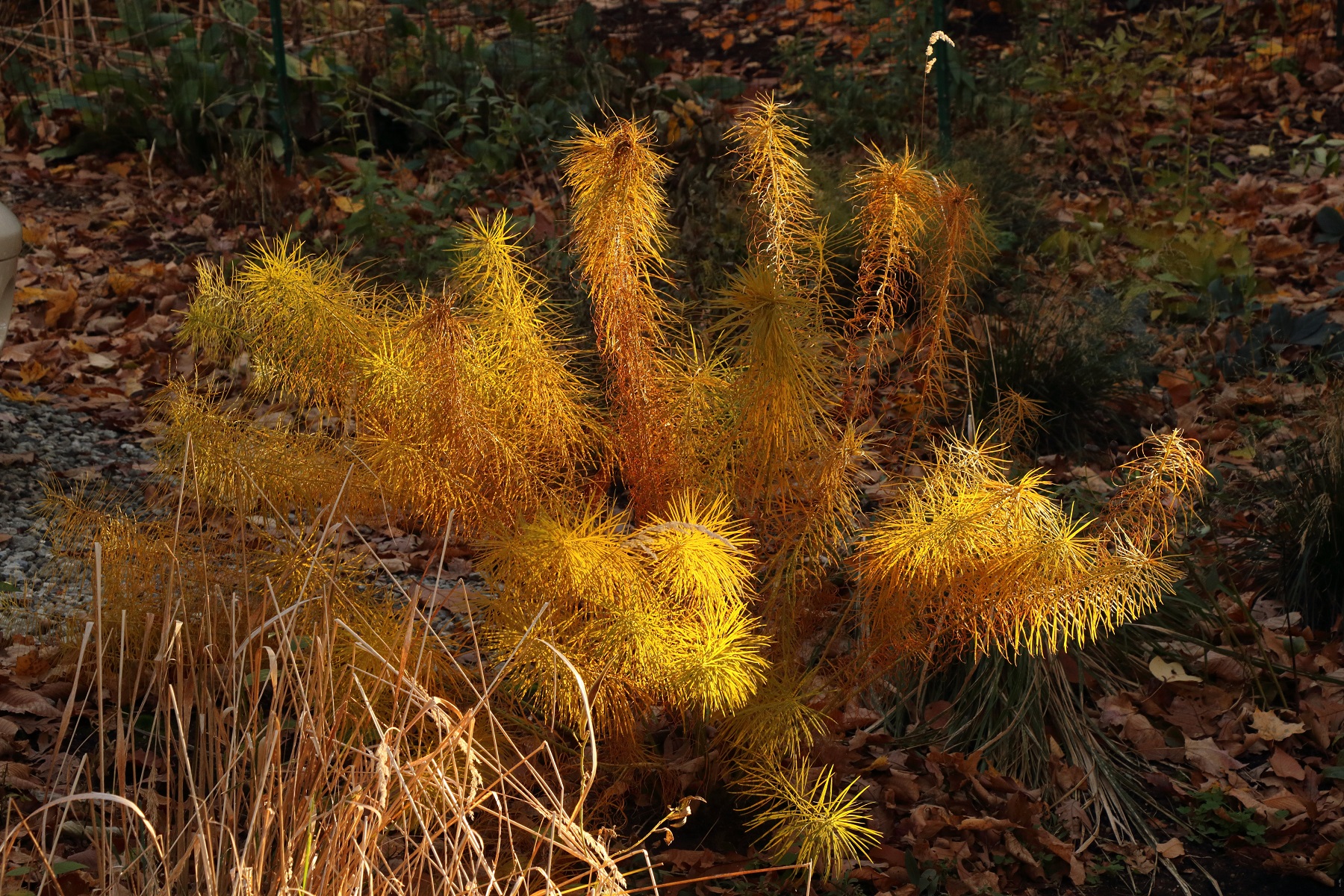
Dwarf Blue Star
This dwarf form of Blue Star, growing only to 1.5′, deserves separate mention, since it requires less space than the other Amsonias, and has deeper blue flowers. It mixes well with other plants of similar height, such as Eupatorium coelestinum (Hardy Ageratum) or Penstemon digitalis (beardtongue).
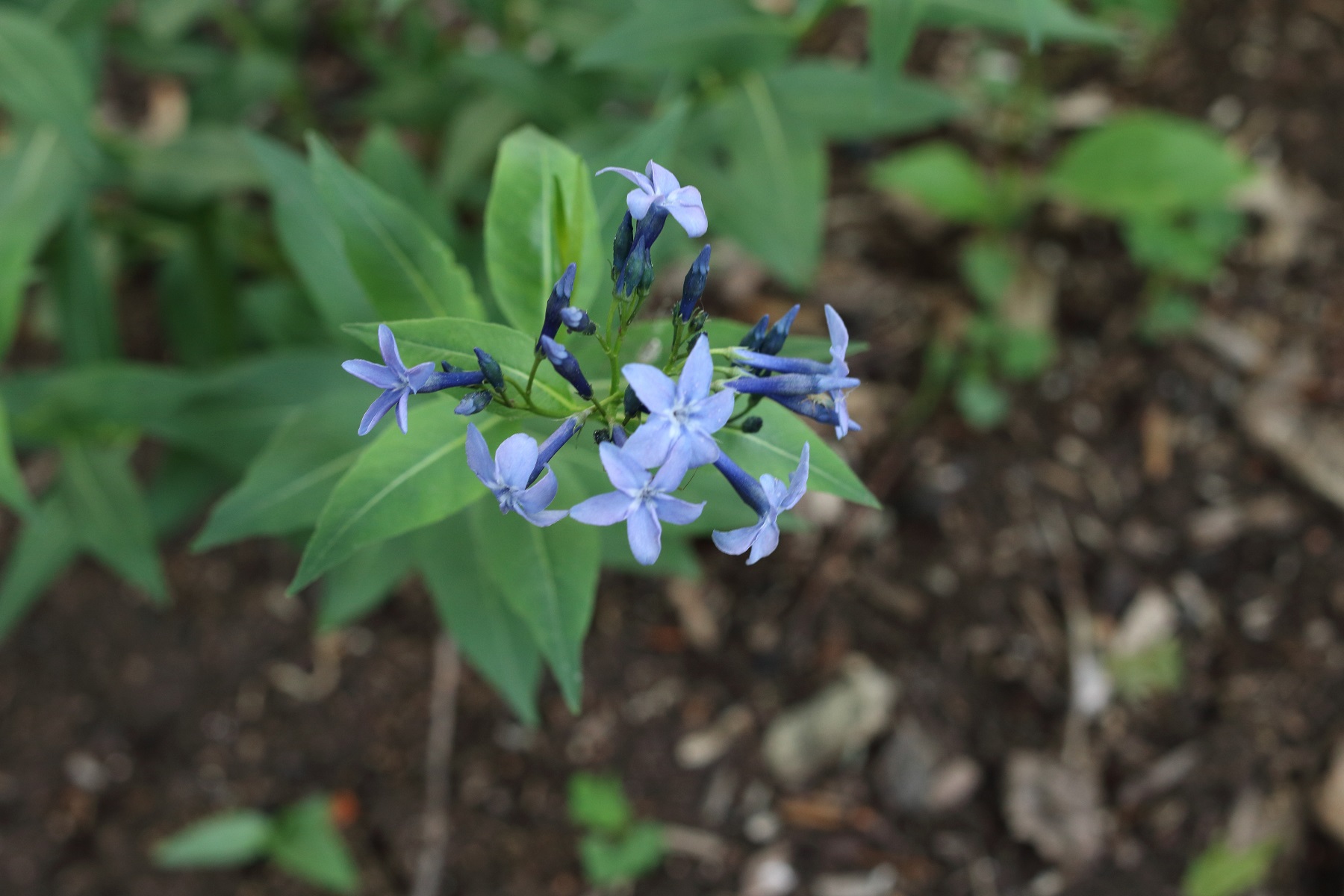
We only recently found out about this more delicate relative of the Foxglove Beardtongue and we like it a lot. It’s much more well behaved, long blooming, and attracts butterflies and bumblebees. Deep flowers have beautiful shades of pink.
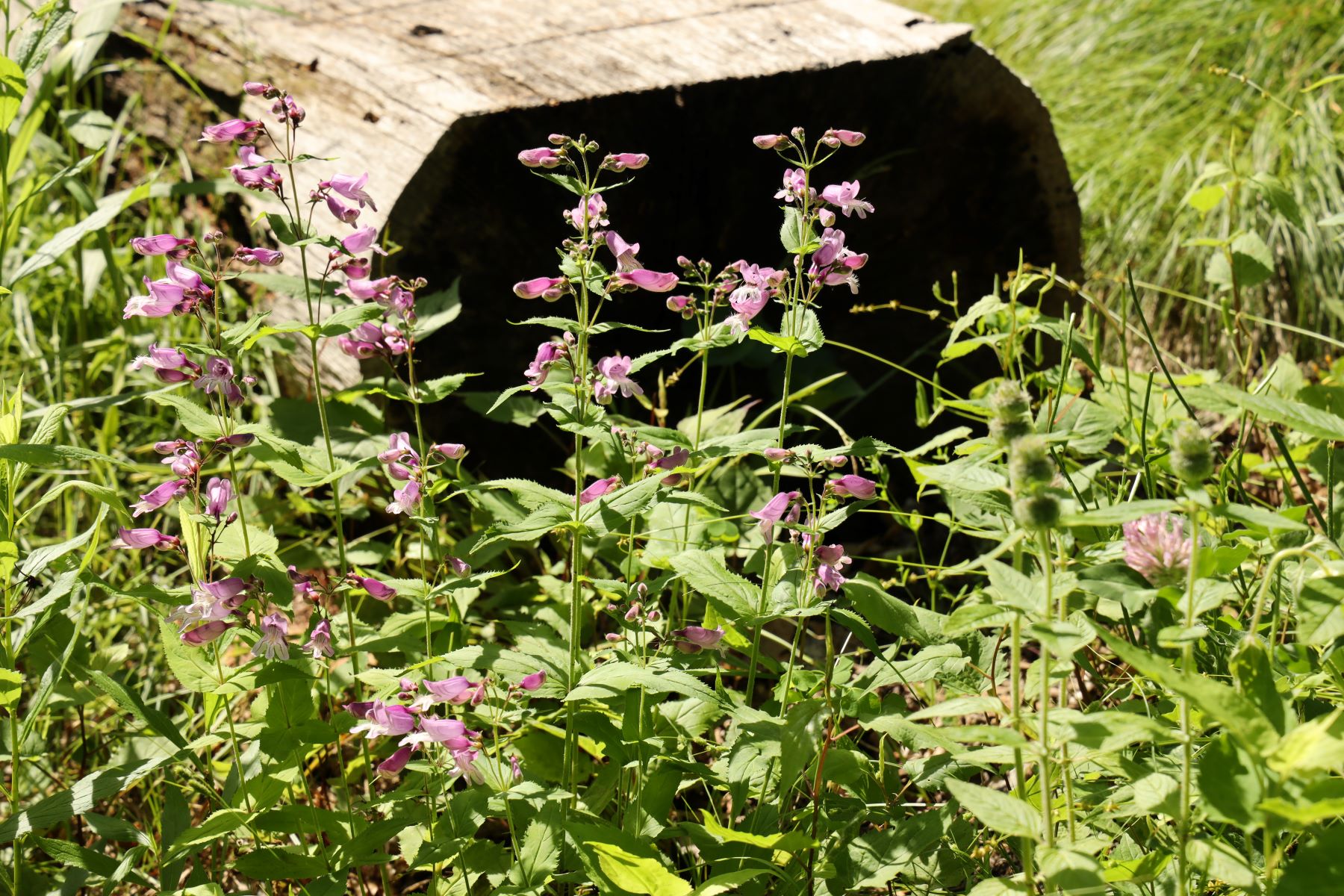
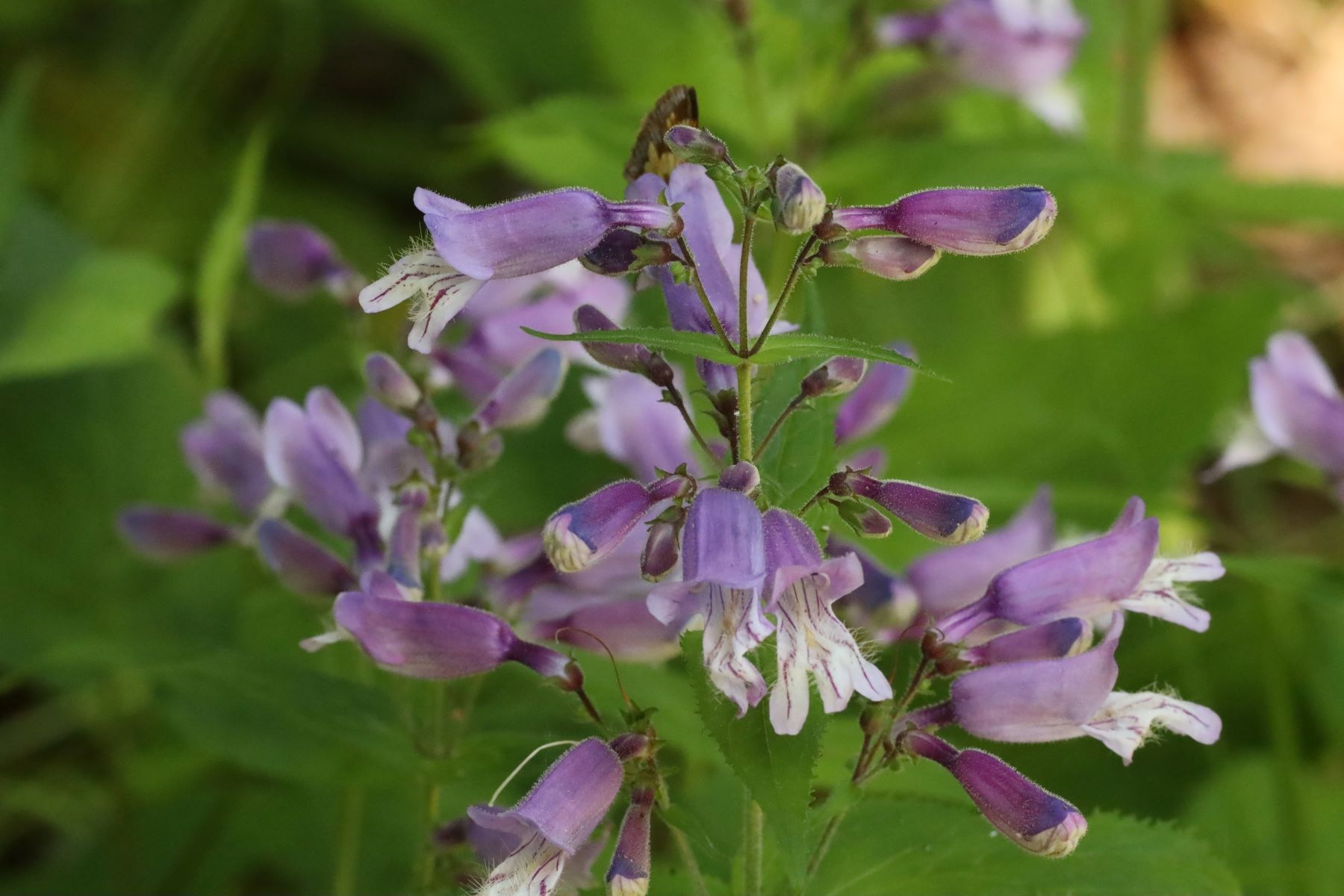
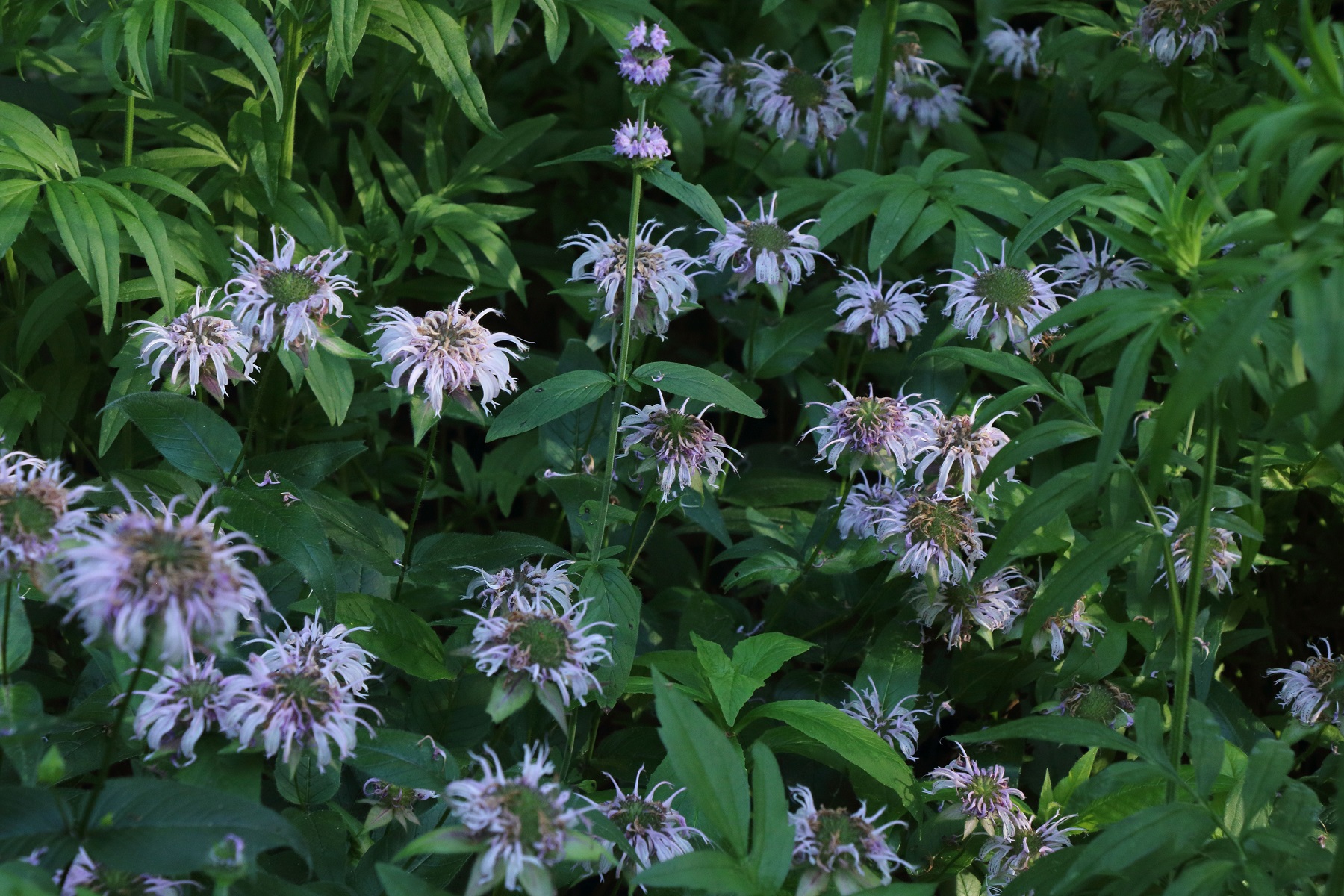
Downy Wood Mint
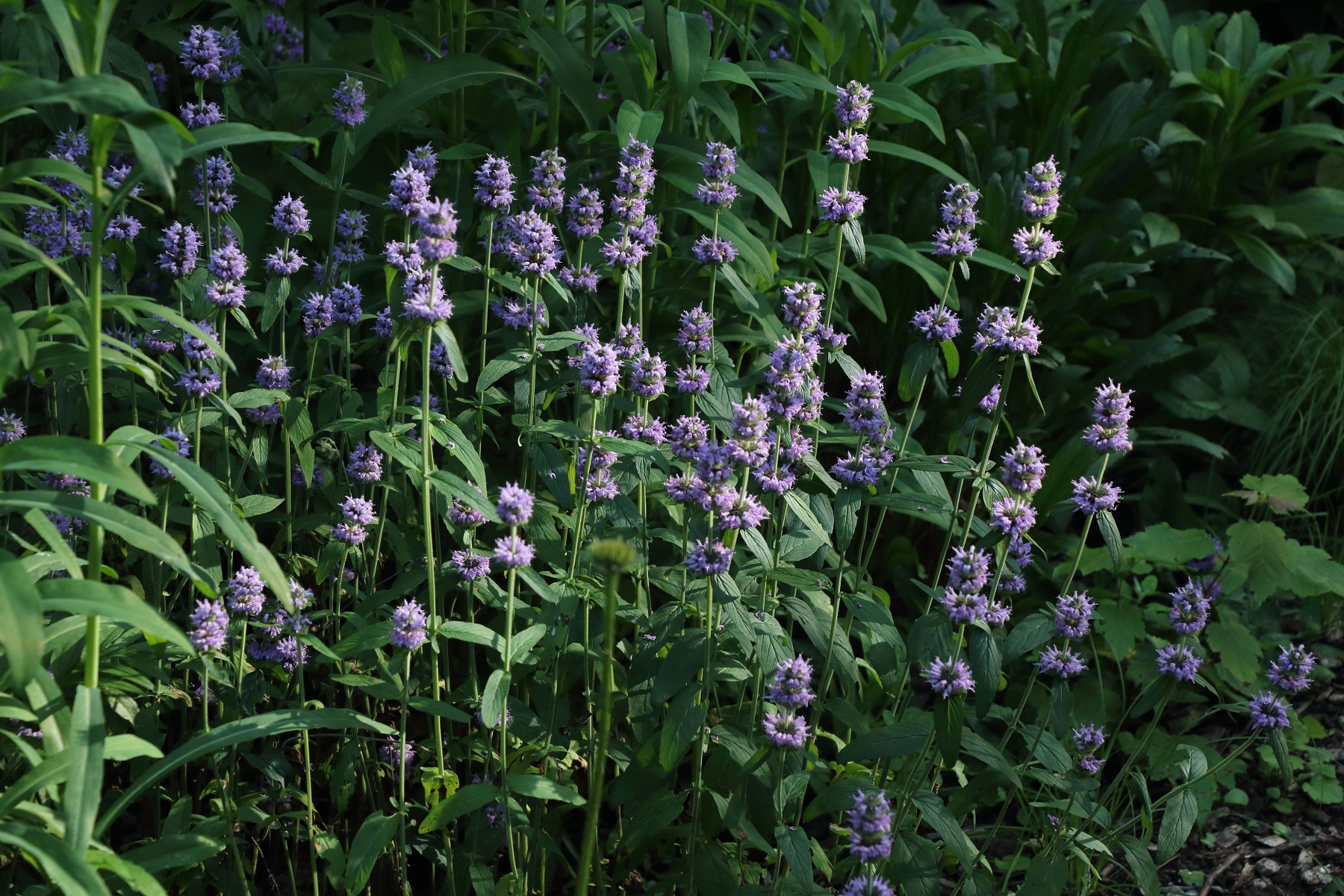
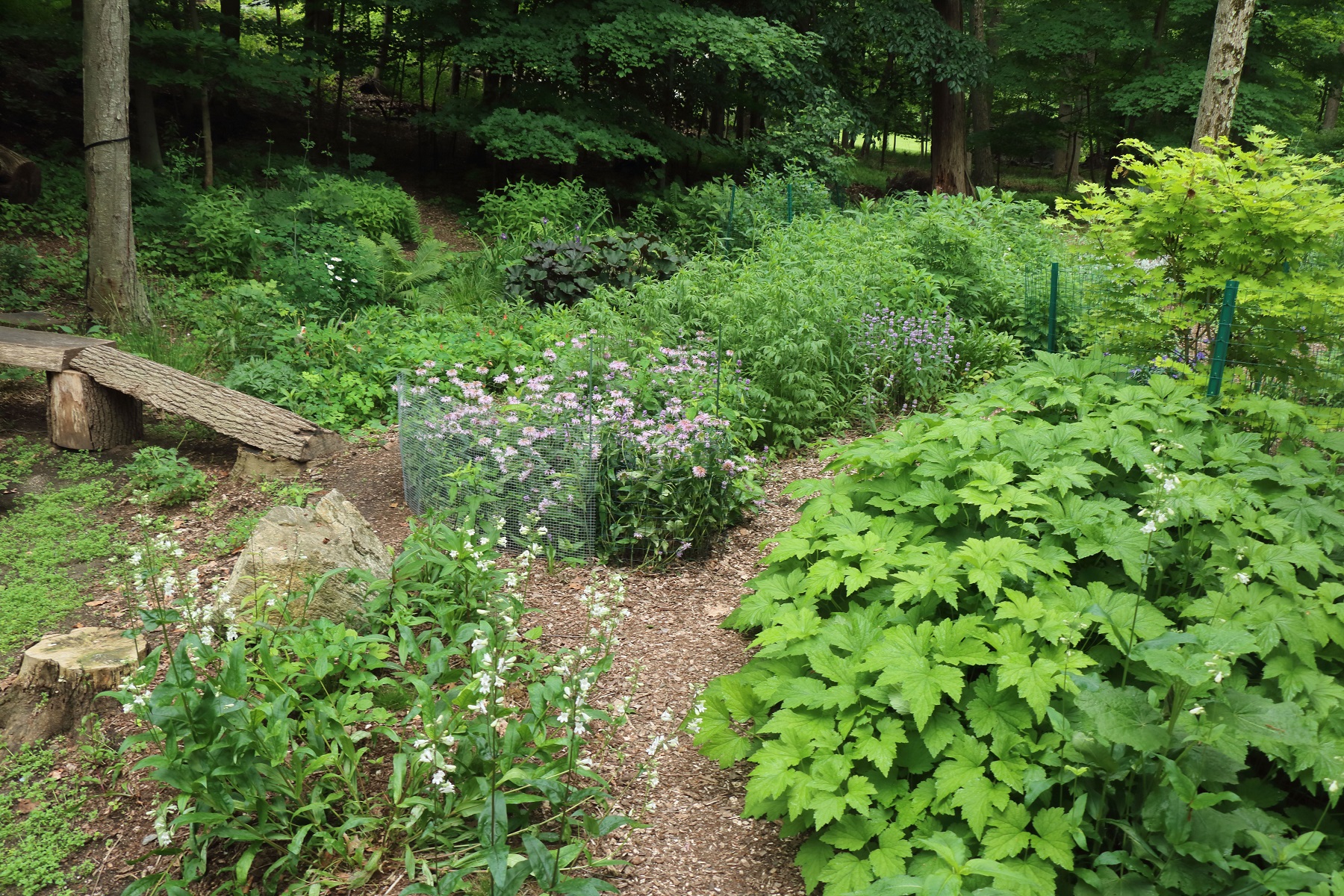
Penstemon Digitalis 'Husker's Red', Monarda bradburiana, Blephilia ciliata
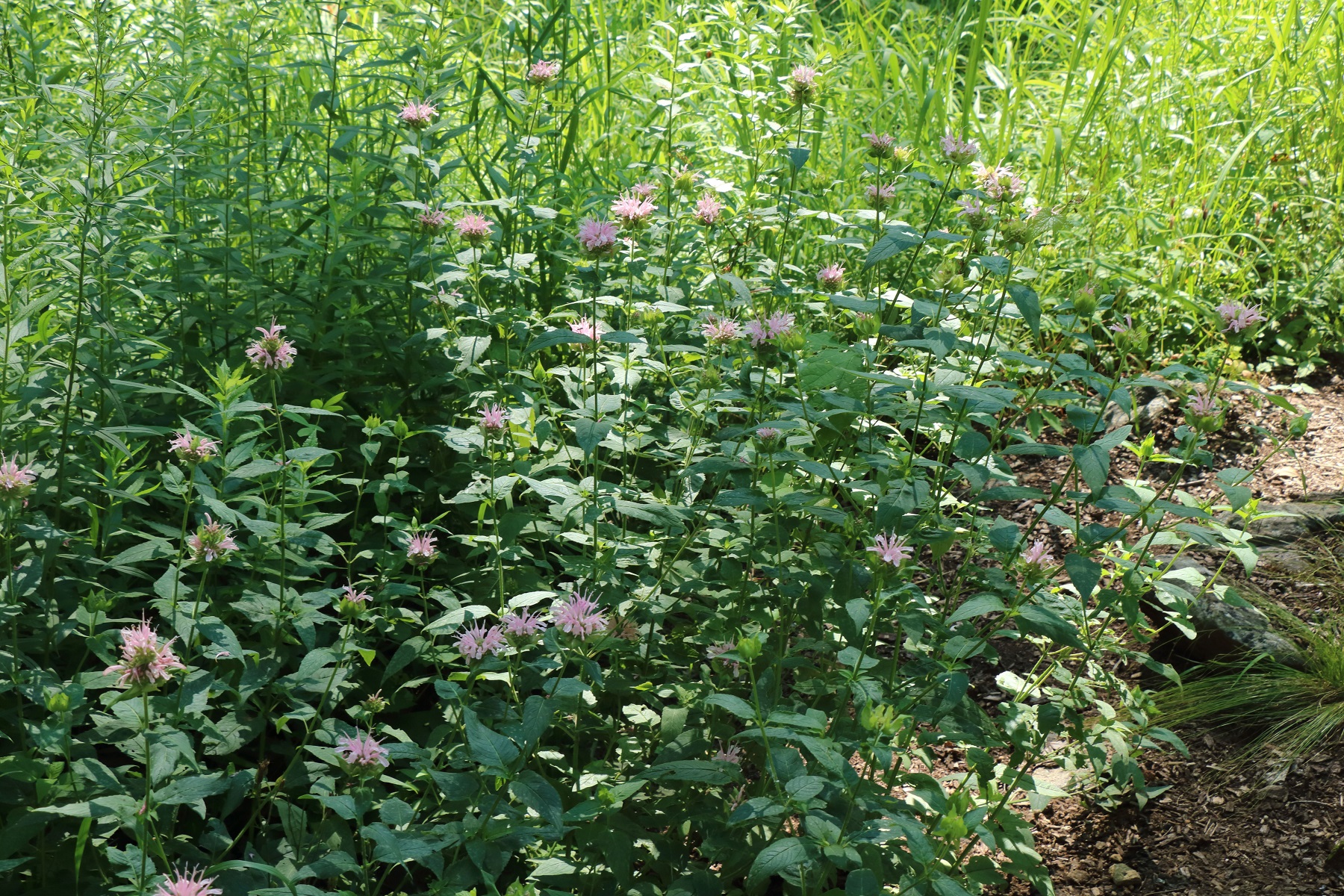
The flowers of Mountain Mint may not look that attractive to humans, but they are extremely fragrant and oh are they attractive to bees and wasps. Mountain Mint can form a solid stand of 2′ high foliage where happy. The top leaves have a nice shade of greenish white, and they smell even more when crushed between the fingers.
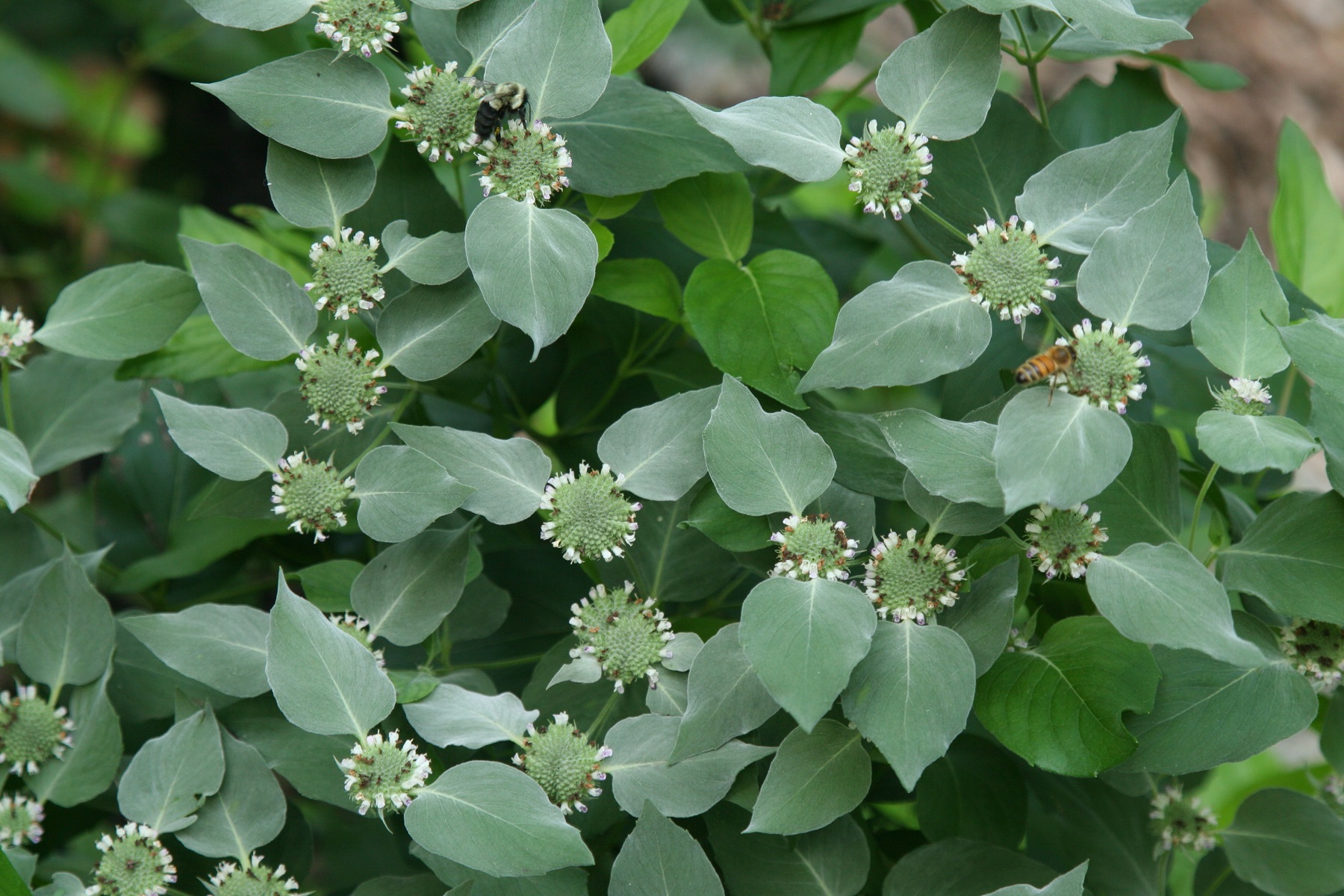
Fire Pink
Fire Pink is a great self-seeding accent plant for the rock-garden setting. In our woodland it pops up in the most unexpected places on rock faces with very little soil. Beautiful pure red flowers (no pink at all) are carried in profusion on tall slender stems in summer.
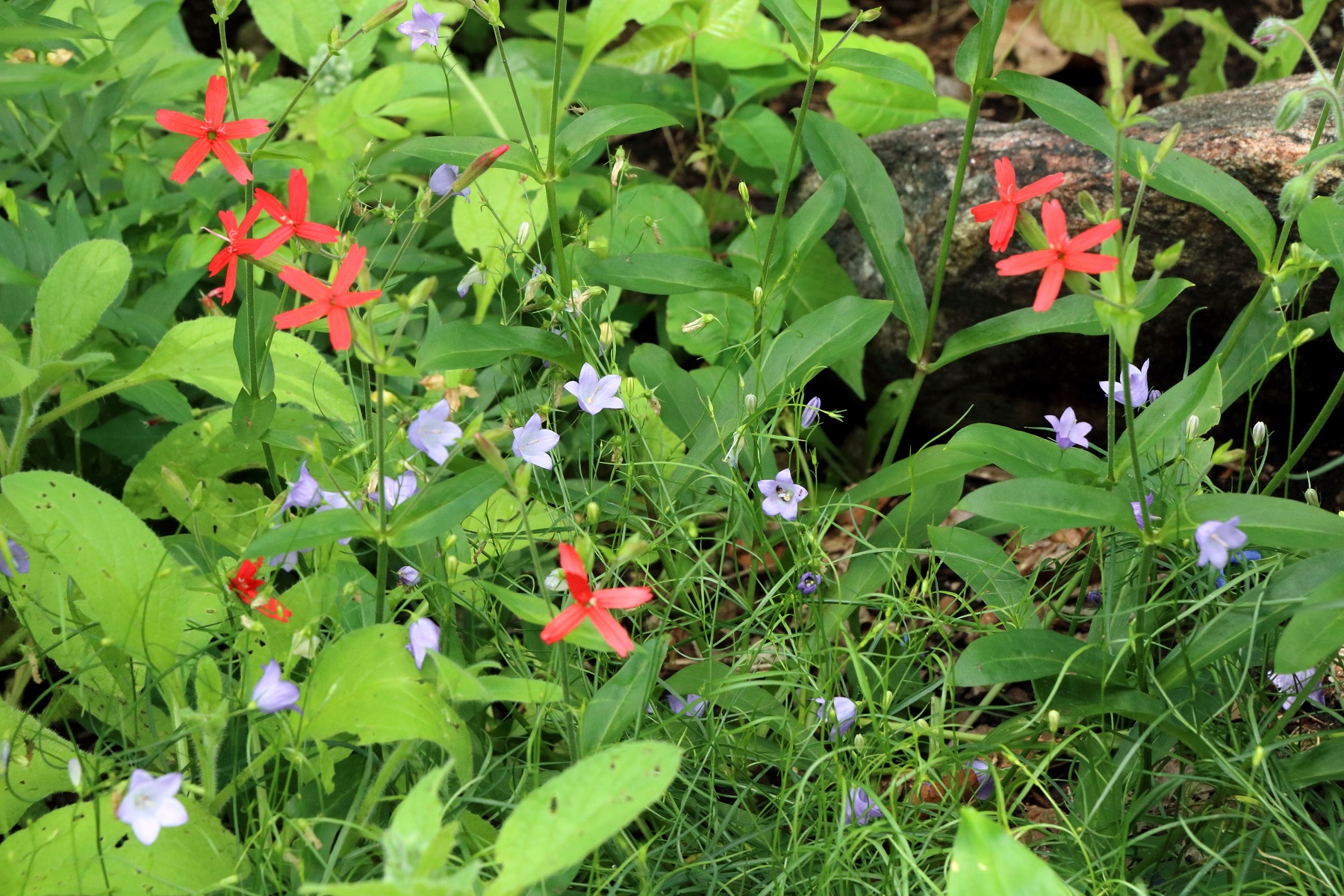
In early spring Lance-leaved Loostrife emerges from the ground in a very attractive dark brown color. Only later does the foliage turn green and even later small cheery yellow flowers appear in profusion. This plant is rarely encountered in gardens or nurseries, but we love the informal look. Currently we are trying to propagate it by digging up the spreading clump and dividing it.

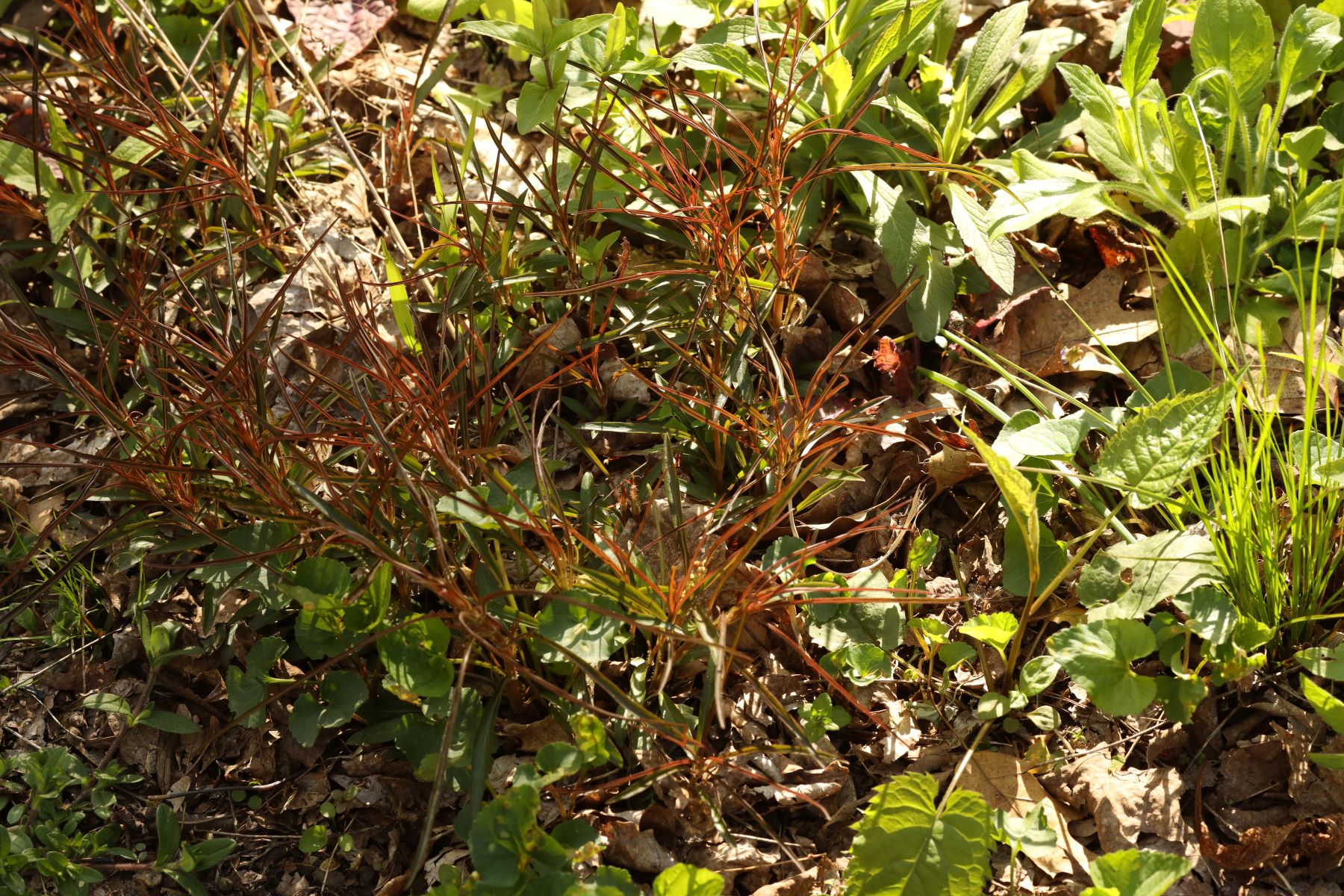
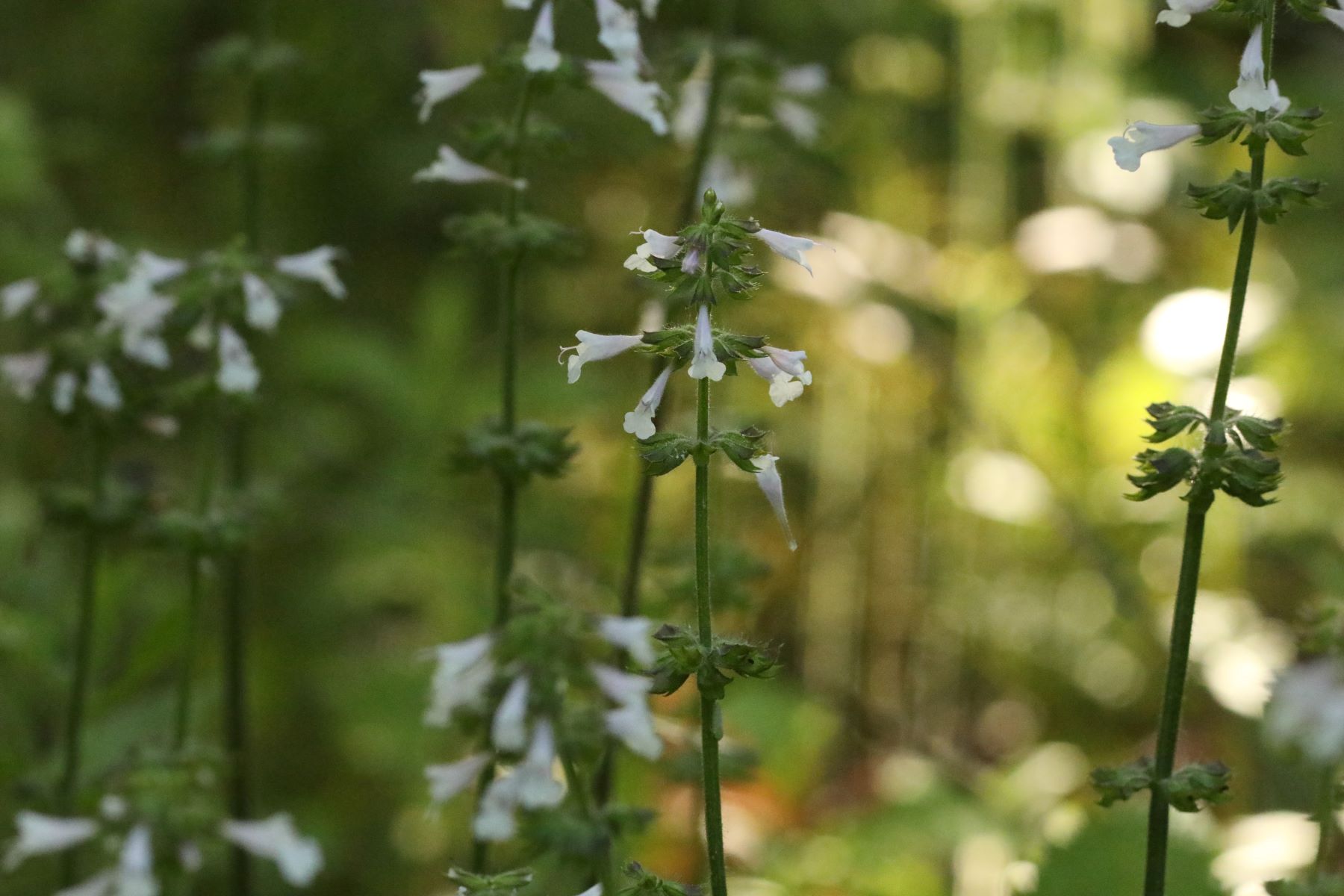

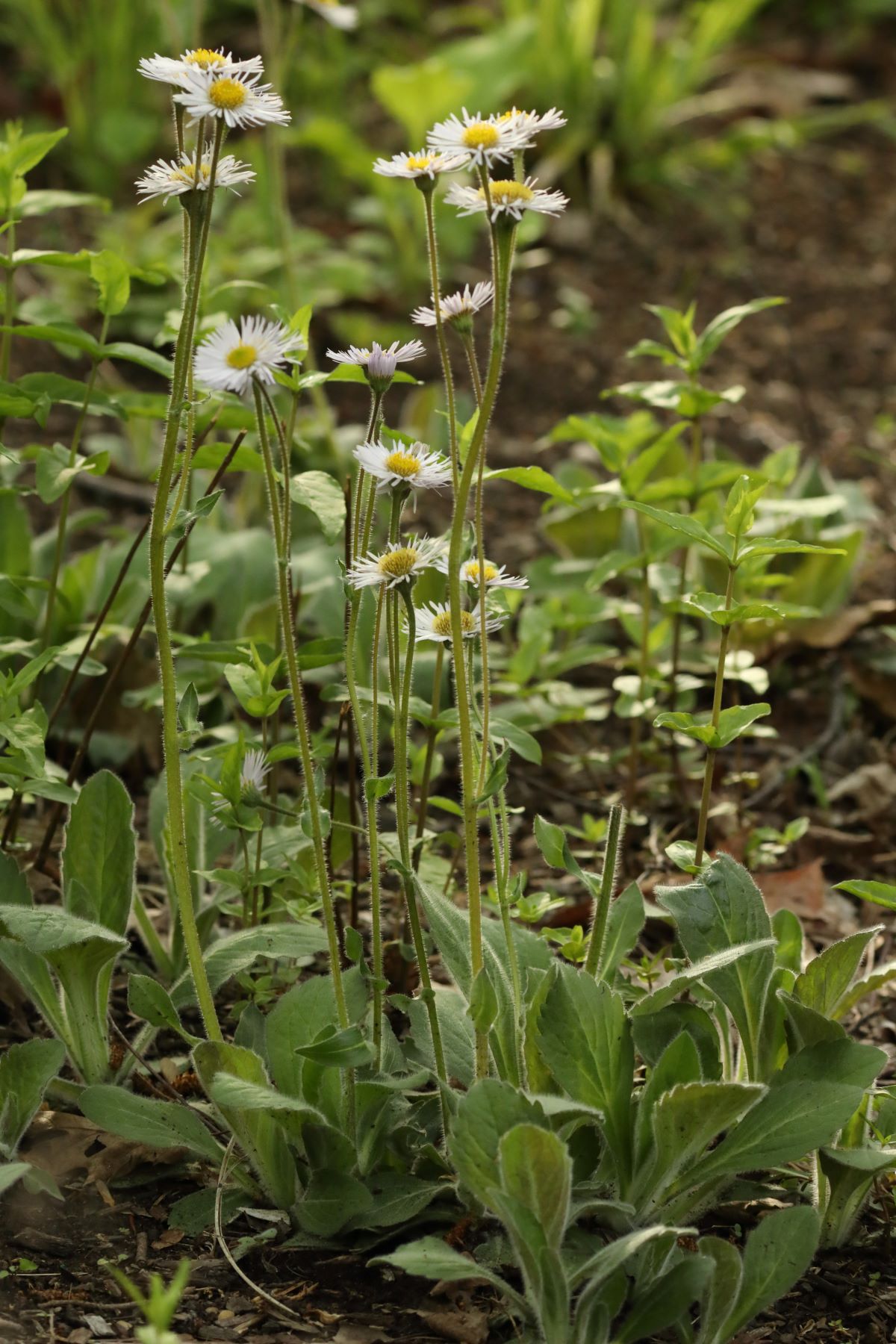
This cactus must be one of the most surprising plants one can encounter in a northeastern woodland. It likes rock-garden settings with at least part-sun exposure. It will grow in more shade but flowering is better in sun. The fruit is also an attractive red, but we never get to see or taste it, since the chipmunks get it before we can.
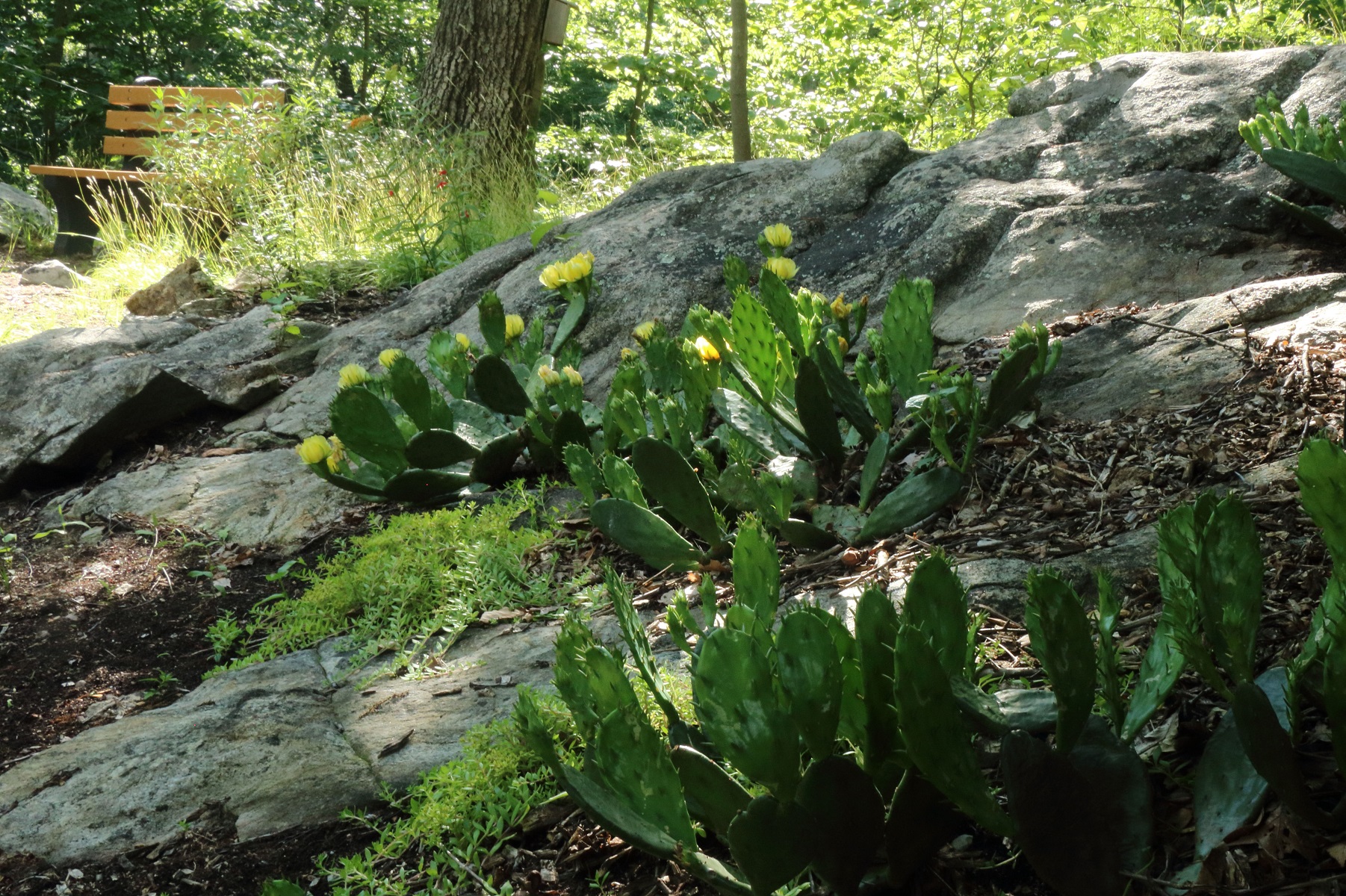
(Eastern Prickly Pear)

(Eastern Prickly Pear)
HONORABLE MENTIONS:
Blue Star (Amsonia tabernaemontana): upright 3′ clumps, blue flowers, yellow fall color
Ozark Blue Star (Amsonia illustris): upright 3′ clumps, blue flowers, yellow fall color
White Wild Bergamot (Monarda clinopodia): Similar to Wild Bergamot with white flowers.
Butterfly Weed (Asclepias tuberosa): Dry sunny areas. Great butterfly plant.
Bluebeard, (Caryopteris x Clandonensis) ‘Dark Knight’: Dry sunny areas. Bees love it.
Blue False Indigo (Baptisia australis): Very fine foliage. Nice clumping habit.
Marsh Marigold (Caltha palustris): Low-growing Wetland Plant
Blue Flag Iris (Iris versicolor): 2′ wetland plant
Copper Iris (Iris fulva): 2′ wetland plant, southern native
American Bellflower (Campanula americana): 2′, blue flowers, for informal gardens
Allegheny Monkey Flower (Mimulus ringens): 2-3′, Blue flowers, for informal gardens
Beardtongue (Penstemon digitalis): Nice in combination with Dwarf Blue Star or Lobelias
Flat-Topped Aster (Doellingeria umbellata): Nice tall aster for naturalizing in woods.
New York Aster (Aster novi-belgii): Very similar to New England Aster.
Bolton’s Aster (Boltonia asteroides): Tall spreading plant, White flowers. May be too aggressive for garden situations.
Aromatic Aster (Aster Oblongifolius) ‘October Skies’: Woody stems, low growing, nice flowers and more deer resistant than New England Aster.
Heartleaf Skullcap (Scutellaria ovata): Dry sites. Combine with Aromatic Aster.
Harebell (Campanula rotundifolia): Dainty wildflowers
Cutleaf Coneflower (Rudbecka laciniata): Very tall coneflower. Needs support from surrounding plants.
Virgin’s Bower (Clematis virginiana): Native Vine
Beebalm (Monarda) E.g. ‘Beauty of Cobham’: Pink flowering Monarda. Lots of other great Monarda species and cultivars are available.
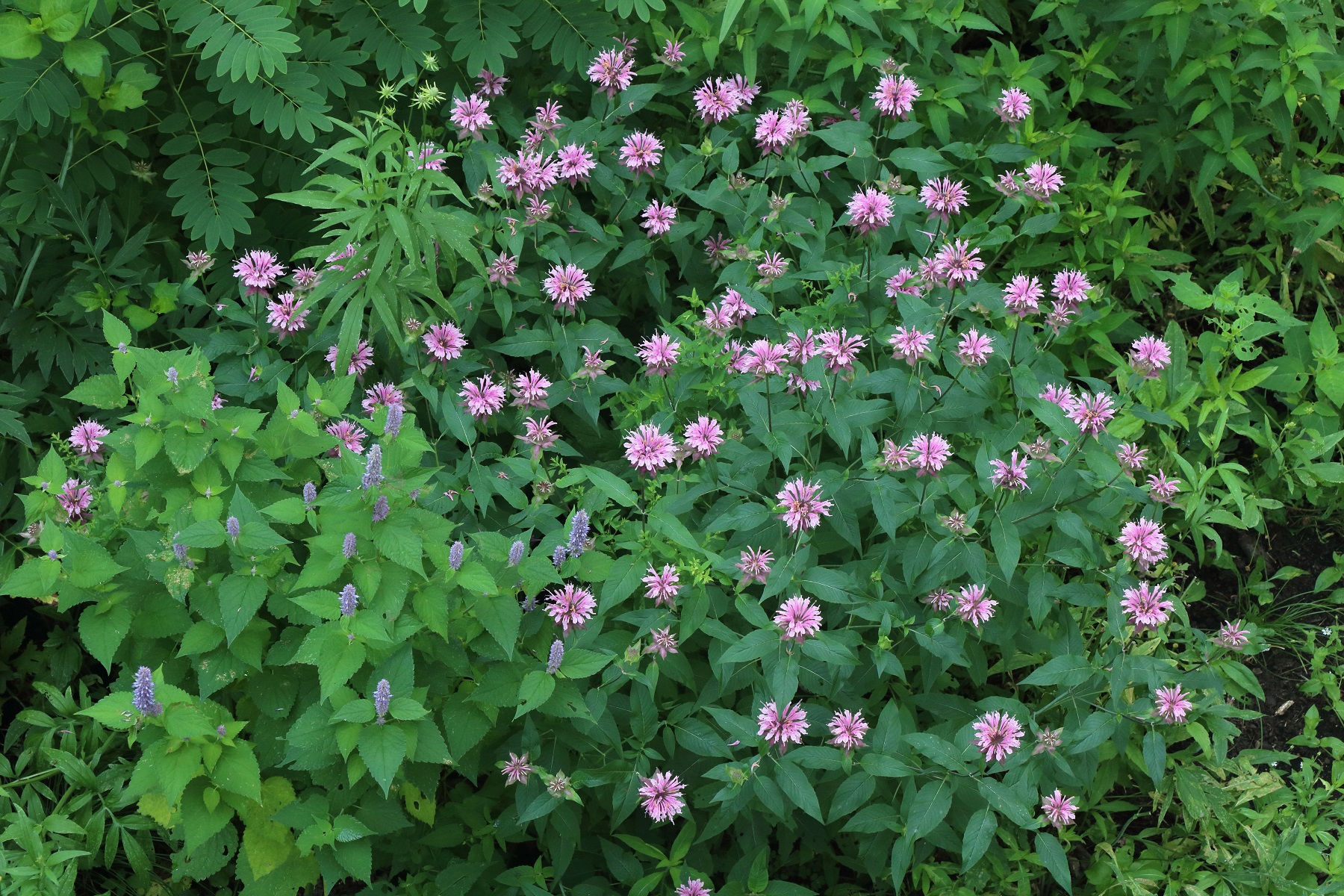
Interesting non-native woodland species for controlled areas:
Daylily, Agastache rugosa ‘Golden Jubilee’, Anemone Tomentosa ‘Robustissima’, Anemone hybrida ‘Pamina’, Calamint, Toad Lily
